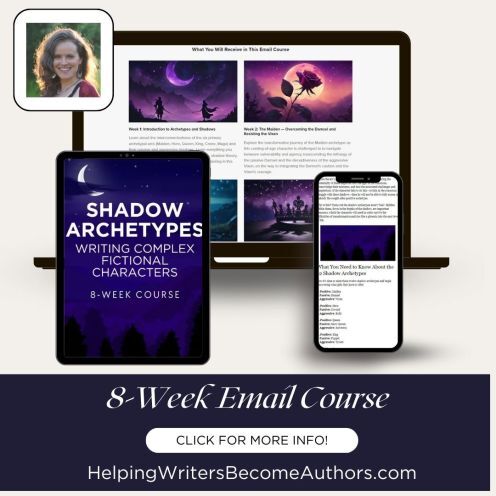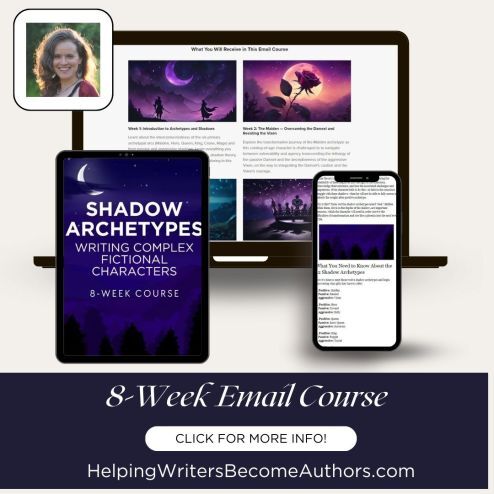K.M. Weiland's Blog, page 8
April 22, 2024
How to Use Symbolic and Archetypal Settings in Your Story
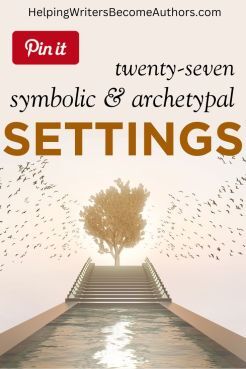 Story settings serve as the backdrop, providing a tangible environment in which characters interact and events unfold. Most settings are realistic and straightforward, providing physical attributes of necessary locations in the story. But writers can raise stories to a higher level by employing symbolic and archetypal settings that go beyond mere description to act as metaphors for abstract concepts, emotions, or themes.
Story settings serve as the backdrop, providing a tangible environment in which characters interact and events unfold. Most settings are realistic and straightforward, providing physical attributes of necessary locations in the story. But writers can raise stories to a higher level by employing symbolic and archetypal settings that go beyond mere description to act as metaphors for abstract concepts, emotions, or themes.
As representatives of the collective human experience, symbolic and archetypal settings enable writers to explore profound themes, create resonance, and immerse audiences in narratives that transcend the confines of the tangible world. Symbolic settings imbue narratives with layers of meaning, allowing writers to convey emotions, themes, and abstract concepts. Taken a step further, archetypal settings tap into shared cultural symbols and myths, offering familiar frameworks that connect deeply with readers.
Over the last few years, I have taught quite a bit about the power of archetypal stories. Specifically, in the many articles on this site, in my book Writing Archetypal Character Arcs, and in my recent Shadow Archetypes course, I have talked about how character archetypes can be used to create potent character arcs. Inherent to all those discussions are many other archetypes and symbols. If you’ve read the beat sheets I’ve provided for the six primary archetypal journeys, then you know they are steeped in mythological and metaphorical language. Something I’ve touched upon in those discussions but never directly addressed are archetypal settings.
A while back I received the following email from Matt Wright:
I’ve been looking into “setting archetypes” as tools for writers to use in their stories but haven’t found much out there. Symbolism.org calls it “Place Symbolism.” … I wonder if you have any thoughts on this?
Today, I thought it would be fun to dive deeper into this topic. Setting is such a crucial element within fiction. Often, we will refer to it as “a character in its own right.” When done well, setting exists as so much more than simply a physical background designed to convince readers of a certain degree of realism. Rather, setting functions as context for everything in a story, which is what, in turn, deepens the opportunity for thematic subtext.
>>Click here to read “How to Choose Story Settings: The 4 Basic Types of Setting”
Although setting’s ability to offer commentary upon the rest of the story can, and often will, arise naturally from the writer’s own subconscious during creation, it is valuable to bring a deeper understanding to the symbolic and archetypal possibilities available for your stories’ settings.
There is much overlap between symbolic and archetypal settings. The distinction lies in contrasting their respective scope and significance.
A symbol is a specific object, image, or element that represents a broader, often abstract idea, theme, or concept. It carries meaning beyond its literal interpretation and can evoke emotions or convey complex notions within the context of a story. Symbols are versatile and can vary in interpretation across different cultures and contexts.
On the other hand, an archetype is a recurring pattern, character, theme, or setting that embodies universal symbols and resonates similarly across cultures and time. Archetypes are deeply rooted in collective human experiences and myths, representing fundamental aspects of the human psyche. They serve as timeless, recognizable molds that shape characters, narratives, and settings, providing a shared framework for how we understand and interact with stories.
While a symbol is specific and context-dependent, an archetype is broader and taps into the fundamental, archaic elements of storytelling that transcend individual tales. In essence, symbols are components within a narrative, while archetypes are overarching, recurring motifs that underpin the very structure of stories.
What Are Symbolic Settings?Almost every story you can think of features a setting that qualifies as symbolic. Indeed, sometimes the entire story will be created around a specifically symbolic setting. This needn’t be overt. Although a story such as Labyrinth may be obvious in using its titular setting to explore the inner maze of the evolving self, stories such as Gilmore Girls or Sweet Magnolias may use the cozy confines of a small town to symbolize safety, support, and friendship in a much more natural and invisible way.

Sweet Magnolias (2020-), Netflix.
Even stories that aren’t explicitly aware of their own symbolism often end up using settings that reflect characters’ moods or internal struggles. For example, graveyards are commonly used as backdrops for explorations of grief, terror, or mortality.
A skilled writer who is conscious of the power available in setting will tweak settings to create important symbolism. For example, both the James Bond and Jason Bourne movies are about globe-trotting spies, but the way the international settings are used evoke totally different moods and metaphors to support the respective characters’ personal journeys.
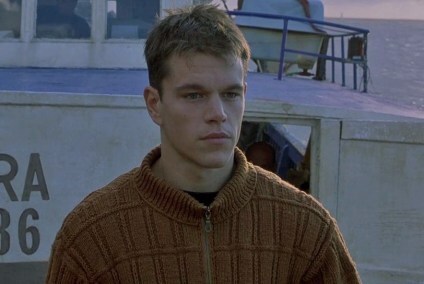
The Bourne Identity (2002), Universal Pictures.
Following are some of the more common symbolic settings you might use in your stories.
1. Maze or LabyrinthRepresents the journey of self-discovery, challenges, and the complexity of life.
For Example: Labyrinth, Pan’s Labyrinth, The Maze Runner, Inception
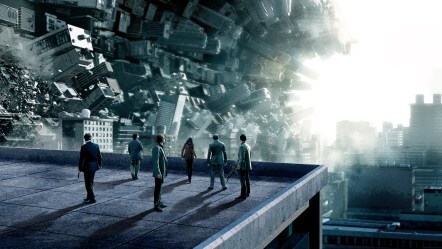
Inception (2010), Warner Bros.
2. ForestSymbolizes mystery, danger, the unknown, themes of transformation and growth, healing, connection to nature, and harmony.
For Example: The Lord of the Rings, Where the Red Fern Grows, Princess Mononoke, Robin Hood, Where the Wild Things Are
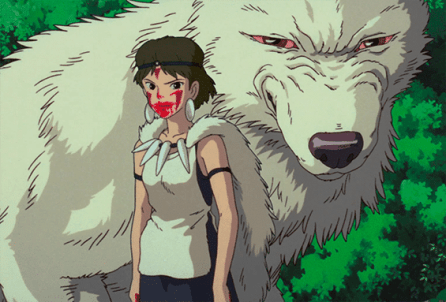
Princess Mononoke (1997), Studio Ghibli.
3. DesertConveys isolation, hardship, emptiness, and spiritual journey.
For Example: Lawrence of Arabia, The Ten Commandments, Dune, Mad Max: Fury Road, The Alchemist, The English Patient

Mad Max: Fury Road (2015), Warner Bros.
4. CaveRepresents secrets, hidden truths, self-reflection, and the concept of rebirth.
For Example: The Empire Strikes Back, The Descent, Plato’s allegory of “The Cave.”
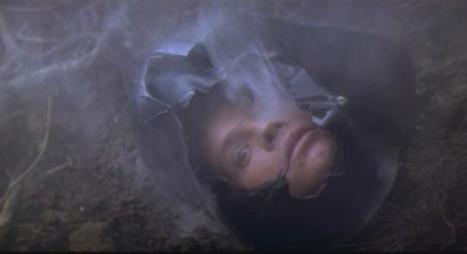
Star Wars: The Empire Strikes Back (1980), 20th Century Fox.
5. Castle or FortressSignifies power, authority, protection, and can also represent imprisonment or confinement.
For Example: Dracula, The Last Castle, Harry Potter, Beauty & the Beast
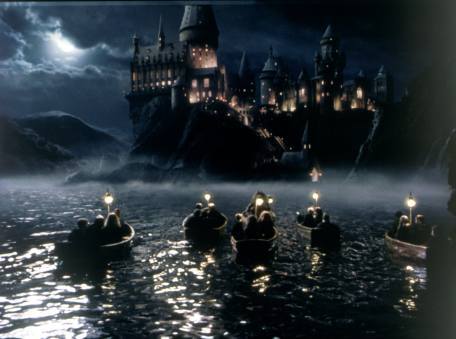
Harry Potter and the Philosopher’s Stone (2001), Warner Bros.
6. Ocean or SeaSymbolizes the subconscious, vastness, exploration, the unknown, and the mysteries of life.
For Example: Life of Pi, Moby-Dick, The Old Man and the Sea, Moana, 20,000 Leagues Under the Sea, Finding Nemo, Cast Away, Ponyo

Moana (2016), Walt Disney Pictures.
7. IslandRepresents solitude, isolation, self-discovery, and serves as a microcosm reflecting society.
For Example: Lord of the Flies, Robinson Crusoe, Swiss Family Robinson, The Tempest, And Then There Were None
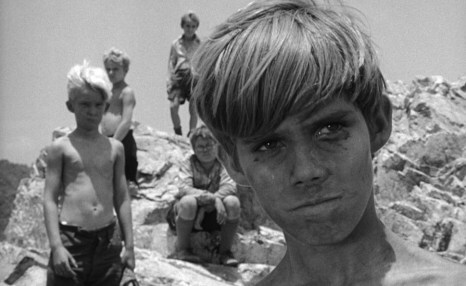
Lord of the Flies (1963), British Lion Film Corporation.
8. CityscapeCaptures the essence of modern life, complexity, anonymity, and the opportunities and challenges of urban existence.
For Example: Blade Runner, Metropolis, West Side Story, The Great Gatsby
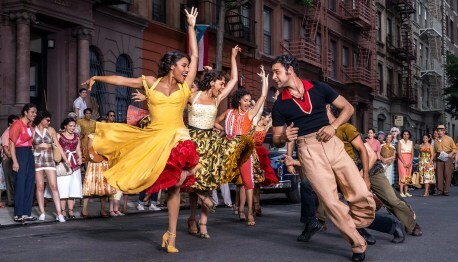
West Side Story (2021), 20th Century Fox.
9. MountainsSignifies challenges, obstacles, spiritual ascent, and isolation.
For Example: Into Thin Air, Seven Years in Tibet, The Mountain Between Us.

Seven Years in Tibet (1997), Sony Pictures.
10. RuinsEvokes themes of decay, the passage of time, and the aftermath of civilization.
For Example: The Road, I Am Legend, Indiana Jones, City of Ember, The Time Machine
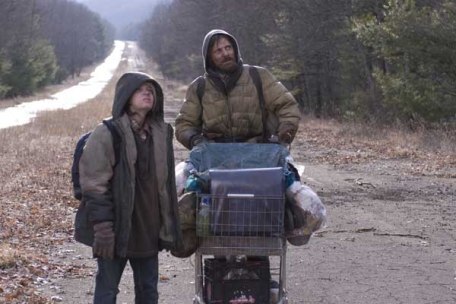
The Road (2009), 2929 Productions.
11. GardenSymbolizes Eden, innocence, the healing power of nature, and personal growth.
For Example: The Secret Garden, The Gardener

The Secret Garden (2020), StudioCanal.
12. TunnelsSignifies hidden truths, the passage between worlds, and the exploration of the subconscious.
For Example: Alice’s Adventures in Wonderland, Pan’s Labyrinth, The Great Escape
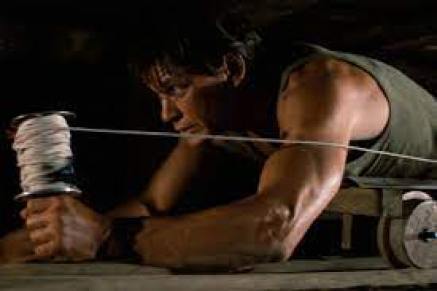
The Great Escape (1963), The Mirisch Company.
13. Outer Space
Represents infinity, the unknown, exploration, and the cosmic forces that shape human existence.
For Example: 2001: A Space Odyssey, Solaris, Interstellar, The Hitchhiker’s Guide to the Galaxy, The Martian, Ender’s Game

The Martian (2015), 20th Century Fox.
What Are Archetypal Settings?Archetypal settings make use of symbolism, but take everything to a deeper place. In part, this depth is achieved through the shared understanding between writer and readers that the archetype represents not just thematic resonance, but a potential initiation of the psyche.
Archetypal settings may be literally archetypal in their presentation. For example, you may represent the Underworld in your story as Hades or some other equivalent. But it can also be represented more symbolically. In some stories, an underground tunnel, a graveyard, or the criminal “underworld” may be understood to represent more than just the setting’s practical function within the story.
An archetype holds the quality of transformation and transcendence. It represents the thresholds of the human experience—aka, the big changes in life, the moments that forever shift our perspectives. We may all walk by a hundred cemeteries in our lives. We may even connect to the shared symbolism of grief and the recognition of our mortality when we visit them for loved ones’ funerals. But none of these casual encounters will necessarily invoke the transformational archetype experienced by Ebenezer Scrooge in A Christmas Carol‘s use of this setting to catalyze permanent change.
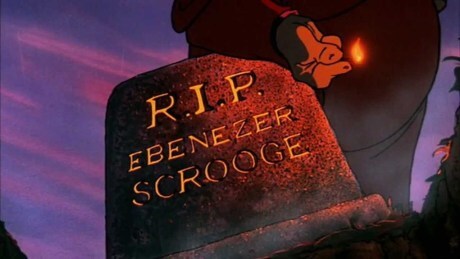
Mickey’s Christmas Carol (1983), Walt Disney Pictures.
Here are some examples of possibilities for archetypal settings in your stories:
1. The UnderworldRepresents the descent into the dark realm, representing either Death or the shadows of the unconscious mind. To go there and return is indicative of the archetypal experience of Death/Rebirth.
For Example: The Inferno, Corpse Bride, What Dreams May Come, Coco, Soul
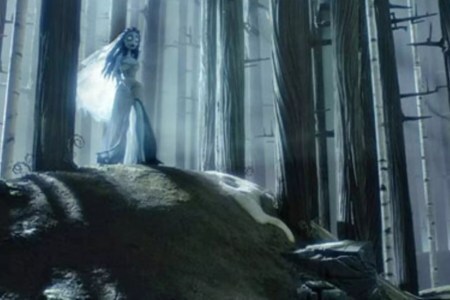
Corpse Bride (2005), Warner Bros.
2. Garden of EdenAn idyllic, perfect setting that often symbolizes innocence and sets the stage for temptation and awakening. It is indicative of the archetypal experience of Innocence and Innocence Lost.
For Example: Paradise Lost, The Giver, Avatar, The Magician’s Nephew, The Poisonwood Bible
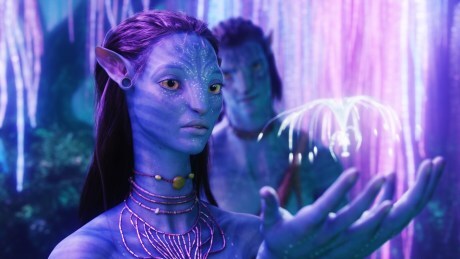
Avatar (2009), 20th Century Fox.
3. The KingdomThe archetypal seat of power, representing authority, leadership, and often the central location for epic tales. It represents the central archetype of psychological transformation, representing the Self. Its relative state of corruption or safety indicates the lessons to be learned in the story.
Example: The Grail legends, Lord of the Rings, Game of Thrones, The Lion King, Ella Enchanted, The Princess Bride
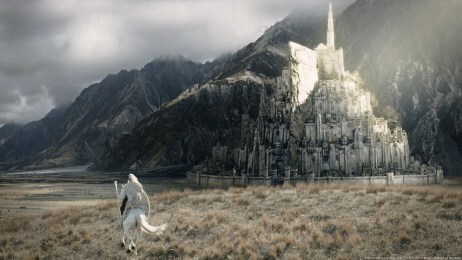
The Lord of the Rings: The Return of the King (2003), New Line Cinema.
4. WildernessA vast, untamed environment symbolizing both danger and the potential for self-discovery. It is indicative of the archetypal experience of descending into one’s shadow or unconscious on a quest for personal growth and wholeness.
For Example: The Call of the Wild, Wild, The Revenant, The Edge

Wild (2014), Fox Searchlight Pictures.
5. The WastelandA barren, desolate landscape representing decay, loss, and the need for renewal or rebirth. Can share attributes with the ocean and the desert. It is indicative of the archetypal experience of confronting corruption and mortality.
For Example: Mad Max: Fury Road, The Road, The Book of Eli, The Grapes of Wrath, Children of Men, The Walking Dead, Chernobyl
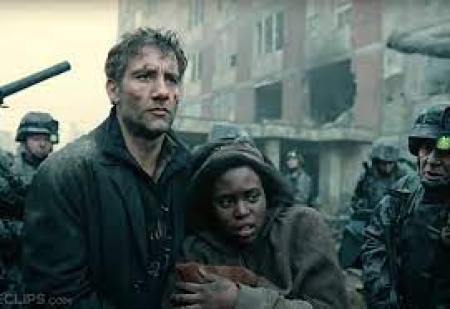
Children of Men (2006), Universal Pictures.
6. Dream WorldA surreal, fantastical world accessed through dreams or imagination, often challenging reality. Can also be a “mirror world,” paralleling reality in some telling way. It is indicative of the archetypal experience of confronting the unclaimed shadows of one’s unconscious—looking at what one doesn’t want to look at or confronting one’s fears.
For Example: Inception, The Wizard of Oz, Spirited Away, Eternal Sunshine of the Spotless Mind, and my own Dreamlander
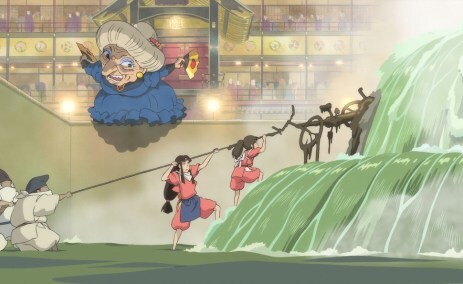
Spirited Away (2001), Studio Ghibli.
7. Temple or Sacred SpaceA place of reverence and mystery, representing spiritual or sacred knowledge. It is indicative of an encounter with the divine, with archetypal Wisdom or Love, or sometimes just with a form of higher intelligence.
For Example: Seven Years in Tibet, Stargate, The Last Crusade, The Hunchback of Notre Dame, The Shack

The Hunchback of Notre Dame (1996), Walt Disney Pictures.
8. The City of GoldA mythical city symbolizing the pursuit of wealth, success, or an idealized destination. It is indicative of an archetypal encounter with the ego, all that one desires or identifies with and all its subsequent temptations.
For Example: The Road to El Dorado, Atlantis: The Lost Empire, Lost Horizon, Treasure of the Sierra Madre, Lost City of Z
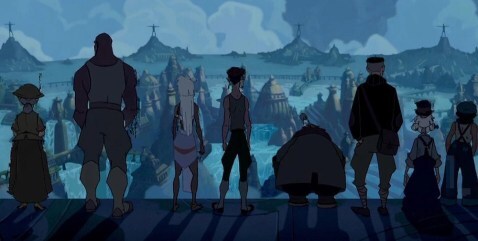
Atlantis: The Lost Empire (2001), Walt Disney Pictures.
Archetypal Settings in the 6 Life ArcsThe symbolic and archetypal settings listed above are only a sampling of those available for you to use in your stories. Writers often instinctively choose the right archetypal setting to represent the central conflicts and themes of their characters’ journeys. Sometimes it will even turn out that a setting you thought you chose for practical reasons is the perfect metaphor and catalyst for your story’s deeper explorations of psyche and spirit.
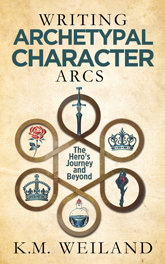
Writing Archetypal Character Arcs (affiliate link)
In my book Writing Archetypal Character Arcs, I explored the six primary arcs of the human life cycle, each representing a significant initiation, beginning with the Maiden’s coming of age and traveling all the way through to the Mage’s surrender of life. These stories (of which the Hero’s Journey is the second) are deeply powerful frameworks upon which to build plots that tap the archetypal foundations we share with our readers.
If you are interested in writing one of these arcs (which you can explore in more depth here), you may be particularly interested in mapping out the specific archetypal settings inherent to each one.
1. The Maiden: HomeThe Maiden Arc begins in the Protected World of her early residence and takes her into the Real World beyond its boundaries. Although this transition can be dramatized via any number of possible symbolic settings, the primary archetypal setting around which her entire journey revolves is that of the Home.
Specifically, this is the Home of her childhood, the home of her parents or caretakers. In certain types of stories, this may not be represented literally, but it should evoke the sense of being relatively safe and cared for. The Maiden’s growth arc is that of moving beyond the controlling protection of her authorities into responsibility for herself and her own well-being. The Home setting symbolizes everything she risks losing in this transformation, as well as the constrictions of childhood she is being called to leave behind.
For Example: Ever After, Bend It Like Beckham, The Truman Show, Little Women
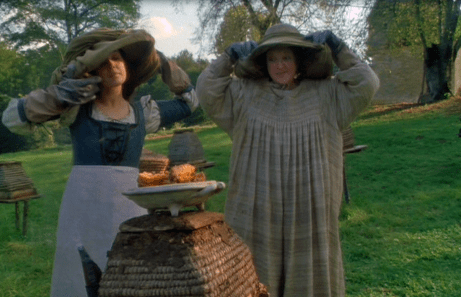
Ever After (1998), 20th Century Fox.
2. Hero: Village/RoadThe Hero Arc begins in the Normal World of the First Act and takes him into the Adventure World of the Second Act. The archetypal setting that frames both these symbolic words is the Village. Best known from classic portrayals of the Hero’s Journey, such as those originated by Joseph Campbell and Michael Vogler, the Village represents the home the Hero shares with his tribe. It is the place from which he leaves to embark on the Road during his quest; indeed, it is the place he specifically leaves to protect. And it is the place to which he will return with the healing elixir at the end after overcoming the Dragon.
Although the Village may be literally represented by a small town, what it symbolizes is community. Like the Maiden’s Home, the Village encompasses both the stifling qualities the Hero wants to leave behind and must fully individuate from, but also the redemptive and loving qualities that will inspire him to return with aid and to re-integrate as a healthy member of society. The Road, with all its dangers, will provide the Hero with the adventure he craves, the experience he lacks, and ultimately the perspective required to find his place within the Village.
For Example: Mulan, Treasure Island, The Goonies, Back to the Future
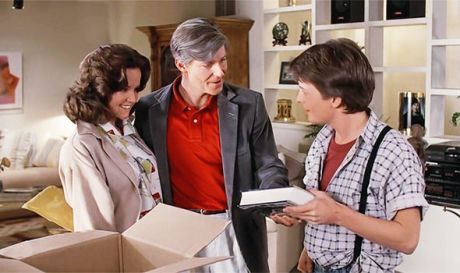
Back to the Future (1985), Universal Pictures.
3. Queen: Hearth/KingdomThe Queen Arc begins in the Domestic World of the First Act and takes her into the Monarchic World. She will begin at the Hearth, a cozy space not unlike the Maiden’s Home, but with the difference that the Queen is ruler of this little world. The Hearth represents her great loving heart and her capacity to care for others. She will then be challenged to grow into greater leadership by stepping beyond the Hearth into the wider Kingdom.
Although the Kingdom can be seen as an archetypal backdrop for all the archetypal arcs (or, really, any story), for the Queen the symbolism of the Kingdom is specifically pertinent, as she is challenged to take the throne of her story’s world. The Kingdom represents a broadening of her influence. She moves from being responsible for a family or perhaps the Village to now taking charge of a much vaster realm. The contrast between Hearth and Kingdom is striking, and the transition is not always an easy one, as embracing the power of the Kingdom often feels like sacrificing the comforts of the Hearth.
For Example: Elizabeth, A League of Their Own, The Incredibles, 42
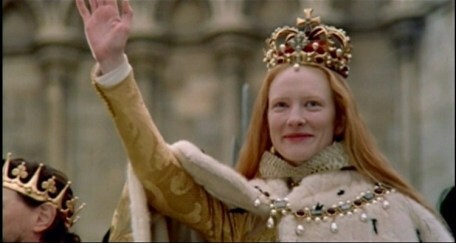
Elizabeth (1998), PolyGram Filmed Entertainment.
4. King: Palace/EmpireThe King Arc begins in the Regal World and takes him into the Preternatural World. The foundational setting archetype for the King is that of the Empire he rules, which is often symbolized on a smaller level by the Palace in which many of the scenes take place. Although the King may venture outside the Palace, he will not venture outside his Empire. Rather, the great Cataclysm that threatens his reign will infiltrate his realm and come to him.
The Cataclysm itself can be viewed as a sort of setting—as an apocalyptic stormscape of sorts—that alters the base setting of Empire, turning what was once safe and protected into someplace dangerous and uncertain. The King’s arc will evolve him into a surrender of his power and an exit from the world stage. The supernatural aspects of the Preternatural World may be represented by grand archetypal settings, but more likely by the inner landscape of his own mind.
For Example: Casablanca, Iron Lady, Braveheart, Black Panther
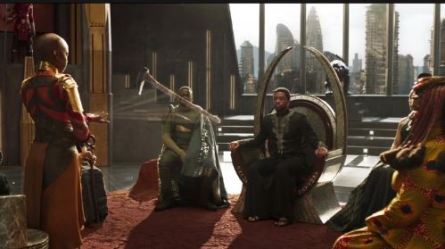
Black Panther (2018), Marvel Studios.
5. Crone: Hut/UnderworldThe Crone Arc begins in the Uncanny World and moves to the Underworld. Symbolically, a Hut in the dark forest best represents the Crone’s starting place. She begins in a comparatively small and confined physical space—symbolizing, in part, the comparative smallness and constriction of her own diminishing physicality. From there, she will begin to explore her potential for psychological and spiritual vastness.
The Underworld is the crucial archetypal setting for the Crone. It represents her central challenge of confronting Death, via her own mortality, and discovering the hope necessary to still embrace Life. Although the Underworld may, of course, be dramatized literally, it may also be represented quite subtly. What is important is that it brings with it that sense of the uncanny—the sense of moving beyond the ordinary into non-ordinary reality.
For Example: Howl’s Moving Castle, Our Souls at Night, Up, Paladin of Souls
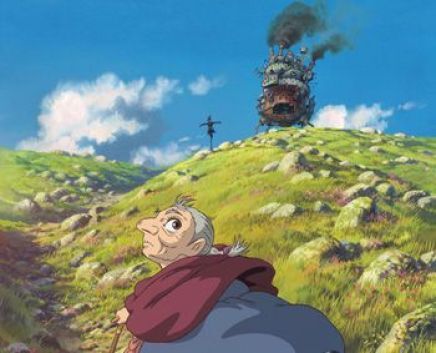
Howl’s Moving Castle (2004), Studio Ghibli.
6. Mage: CosmosThe Mage Arc begins in the Liminal World and moves to the Yonder World. What is meant by this is that the Mage begins already with a broadened perspective that allows him to see the greater truths of Life and to look beyond into the even greater truths of Death. From there, the arc of his story will eventually take him beyond this world, into the “Yonder.” His realm is bigger than simply the practical concerns of the Queen’s Kingdom or the King’s Empire; he understands that these domains are but tiny pieces of the larger Cosmos.
However, as big as the Mage’s archetypal setting can indeed be, it is often represented more practically by the much smaller archetypal settings of previous archetypes. The Village, Kingdom, and Empire can all be on the map of his journey, as he travels to help younger archetypes with their own challenges. What is most important in choosing the Mage’s archetypal settings is that they contrast the physical limitations with his own understanding of himself as a “citizen of the Cosmos,” as someone who is “in the world, but not of it.”
For Example: Miracle on 34th Street, Mary Poppins, The Legend of Bagger Vance, Star Wars: A New Hope
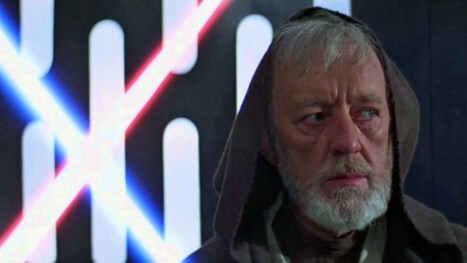
***
While all stories find grounding in realistic descriptions, the magic of symbolic and archetypal settings shapes a narrative’s very soul. Symbolic settings transcend the literal, weaving layers of meaning into the narrative fabric, while archetypal settings tap into the symbols, resonating across cultures and epochs. As conduits of collective human experiences, these settings unlock profound themes that transport audiences into the realms of metaphor and myth. Each symbol and archetype serves as a portal, inviting readers on a transformative journey.
Wordplayers, tell me your opinions! What symbolic and archetypal settings have you used in your stories? Tell me in the comments!Click the “Play” button to Listen to Audio Version (or subscribe to the Helping Writers Become Authors podcast in Apple Podcast, Amazon Music, or Spotify).
___
Love Helping Writers Become Authors? You can now become a patron. (Huge thanks to those of you who are already part of my Patreon family!)The post How to Use Symbolic and Archetypal Settings in Your Story appeared first on Helping Writers Become Authors.
April 15, 2024
Checklist for Beginning Your Story: Plot Considerations
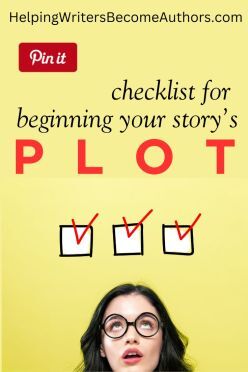 Welcome to this week’s post, which is a continuation of what we talked about in last month’s video when we started a checklist of important elements to consider for your story’s beginning. Last time, we specifically talked about what you need to consider in regards to character and all of the many elements you can use both to enhance character in the beginning and to use character to create an awesome beginning that hooks readers.
Welcome to this week’s post, which is a continuation of what we talked about in last month’s video when we started a checklist of important elements to consider for your story’s beginning. Last time, we specifically talked about what you need to consider in regards to character and all of the many elements you can use both to enhance character in the beginning and to use character to create an awesome beginning that hooks readers.
I talked in that video about how complex a topic beginnings are and how the first chapter has so many moving pieces and so many things to think about, not just in hooking readers and convincing them this is an entertaining story, but also in laying the groundwork for everything to follow. If your beginning can’t do all that, then it compromises the story that follows.
So I wanted to divide this topic into two posts (and you can also watch the video or listen to the podcast, if you prefer those mediums). Really, there’s so much to talk about and we’re not covering all of everything that there is to consider about beginnings.
>>Click here to read “Your Ultimate First Chapter Checklist, Pt. 1: Hooking Readers“
>>Click here to read “Your Ultimate First Chapter Checklist, Pt. 2: Writing the Opening Scene“
>>Click here to read “Your Ultimate First Chapter Checklist, Pt. 3: Introducing the Story“
Today, we are going to be talking about plot considerations for your story’s beginning.
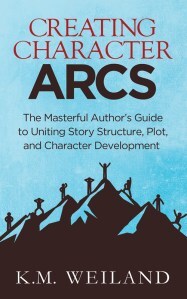
Creating Character Arcs (Amazon affiliate link)
Obviously, character is a huge part of this. You can’t have plot without character. Beginning with some of the things we talked about in the last video as a foundation is important in creating or highlighting elements of your character’s personality that drive the conflict and show your character’s relationship to the thematic Lie and Truth, which are going to drive their character arc and influence what they want and how they interact in the plot.
Setting Up Your Character’s Plot Goal in Your Story’s BeginningOne of the first things to remember in introducing the plot in your story’s beginning is that every scene in your story is like a domino in a row of dominoes. You know how people create those really elaborate designs, where if you push one domino over, it creates this chain reaction? Every domino has to be perfectly in place for this to happen, or the action comes to a halt and, at best, the person has to come in and manually bump over the next domino to recreate the chain reaction.
The first domino in your plotline of dominoes is the first scene. Ask, “How does this set up the chain reaction that’s going to follow?” It can’t be this arbitrary scene that’s tacked on in order to accomplish other important things that have to happen in the beginning (such as introducing characters or even just hooking readers). It has to do so in a way that is integral to the entire story and that creates this sense of cohesion and resonance.
Setting Up Your Character’s Desire and Plot GoalWhat is plot in a nutshell? We can simply think of it as the character wanting something. They have a goal, and that goal is met with obstacles, which is what creates the conflict and therefore the entire drama of the story. It all begins with something your character wants.
This desire is something specific. It’s the plot goal, whatever that may be in your story, whether it’s a relationship (i.e., they want to be with somebody), whether it’s an actual item they’re pursuing that they need, or whether it’s to defeat an enemy. The plot goal can be something very specific (i.e., something they can hold it in their hand), or it can be something more abstract. Whatever it is, it is something specific within the plot. That specific goal is driven by a deeper desire on your character’s part. This is the Thing Your Character Wants.
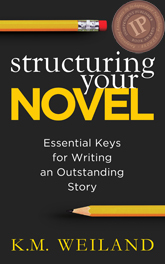
Structuring Your Novel (Amazon affiliate link)
Setting Up the Thing Your Character WantsThis is important to consider when setting up your first chapter, because the plot goal will continue to gel as the story goes along. Particularly throughout the First Act, the goal may not be something the character specifically is after or even knows about necessarily. It may not fully come into view until the beginning of the Second Act, but you still have this whole first part of your story that you have to fill with stuff that has to happen. These events need to engage readers and make them want to read on until they get to that full immersion in the story’s drama.
So what do you do? What drives the plot in this early part of the story? Again, the answer is the Thing Your Character Wants. This is a deeper desire. It’s a deeper Want that fuels the desire and the need for that plot goal. As the story progresses, this desire will funnel into something that’s more specific. But this initial Want is founded upon and driven by the character’s relationship to the thematic Lie the Character Believes.
The Lie is a limited perspective the character holds—a limiting belief about themselves or the world they live in—that is motivating their actions in a way that is ultimately dysfunctional. It becomes increasingly so within the events of your specific story. Think about in this first scene as you’re crafting. What is the Thing Your Character Wants?
Even if you’re not yet able to craft an opening scene that is specifically involved with the plot goal that will come to light later on, you can still craft a scene based around the character’s desire, around the Thing Your Character Wants in this opening scene. In so doing, you get the opportunity to dramatize their relationship to the Lie and their relationship to the Normal World.
>>Click here to read “What Does Your Character Want? Desire vs. Plot Goal vs. Moral Intention vs. Need“
Setting Up the Thing Your Character NeedsYou can also think about the Thing Your Character Needs, which contrasts the Want. Generally, the Thing the Character Needs is the thematic Truth, which the character will come to believe as the story goes on. The Truth is the more expanded mindset contrasts the limitations with which they start out. Obviously, they don’t have the Truth in the beginning of the story. They may never get the Truth, depending on what type of arc they’re following. In a Positive Change Arc, they won’t fully integrate the Truth until the end of the story.
Use your awareness of the Thing the Character Needs—and their lack of it—to show how they’re interacting with the Thing the Character Wants. How are they trying to pursue the Want as a replacement for the Need?
A basic example of this would be that the character needs to let somebody love them, but their want is to fill that need with other things. Maybe they want to be a pop star. They think they want fame when what they need is love. Maybe the story is about falling in love or maybe it’s about reuniting with an estranged parent or something like that, the events of which will help the character evolve their perspective of and their relationship to love and to themselves and to loving themselves ultimately. You’re setting up this plot in which they’re pursuing a mistaken mode of trying to get love via their pursuit of fame. They start out thinking, I’m going to become a famous pop star and everybody’s going to love me! That kind of thing. Set that up in the very first chapter, even as you’re waiting to fully bring in the dynamics that will challenge that mindset and make it difficult for the character to get what they need via what they think they want.
The Structural Job of Your Story’s BeginningFrom a structural perspective, the main function of the beginning is to set up the story that is to follow. Its job is to introduce all of the important elements, whether that’s the characters, the settings, the stakes, the theme, the pieces of your character’s arc (i.e., the Lie the Character Believes, the thematic Truth, the Thing the Character Wants, the Thing the Character Needs). All of that has to be introduced within the First Act. Usually, you will at the very least start foreshadowing almost all of those things from the very first scene in the first chapter.
How can you bring in all these crazy disparate elements that have to start happening within a very confined space? Think about how this first chapter structurally relates to other important structural moments throughout the story.
Using the First Chapter to Set Up the First Plot PointWhat happens in the beginning, whether it’s exactly the first chapter or a little later on, sets up and therefore foreshadows whatever happens at your story’s First Plot Point. The First Plot Point happens around the 25% mark. It’s the the doorway between the First Act and the Second Act. It’s a big moment. It is the moment when your character becomes fully engaged with the story’s main conflict against the antagonistic force in your story. Think about how you can set that up in the very first chapter, even if it’s subtle.
How is what’s happening in this opening scene creating a line of cause and effect within your plot that will lead your character to the First Plot Point? If you realize some of your ideas for this beginning chapter don’t seem to influence the First Plot Point, then it is possible you’re beginning too soon. The true beginning of your story is that moment where the character’s life begins to change. It’s not necessarily dramatic yet; it’s not overt. Very subtly, the circumstances are changing.
The character’s own inner experience is changing in a way that means they cannot remain the way they were anymore. This could be mainly the result of external circumstances. Maybe their neighborhood is going to be condemned, and they have to move, whether they want to or not.

Writing Archetypal Character Arcs (affiliate link)
Or the change could be the result of internal circumstances. This is what we see very often in archetypal character arcs, such as I talk about in my book Writing Archetypal Character Arcs. Wherever you’re at within the life cycle brings you to a point where you’re changing. Puberty is a great example. You don’t get a choice that you’re going on this next character arc into adulthood.
Maybe your character can’t help what’s happening, or maybe they’re excited for it. Maybe they think they know what they’re getting into and they want it. Either way, something is changing. It’s probably subtle. In the first chapter, it’s not at a point where they even recognize their life is going to change forever. But readers get to witness the first rumblings. Those first rumblings are where you want to begin your story. That is what then leads into and foreshadows the First Plot Point at the end of the First Act.
Using the Hook to Set Up the ResolutionOne other thing you can think about structurally, is how the Hook in your story’s beginning mirrors and sets up the Resolution in your story’s ending.
The structural point and job of the first chapter is to act as a hook for readers. It’s to create that opening dynamic that not only kicks off the plot but pulls in readers. The Hook is that first beat in your story’s structure. By the time you get to the Resolution, whatever happens in the beginning, even if it seems very ancillary to the rest of the story, readers should be able to experience a harmony between the beginning and the ending.
For example, perhaps the character returns to wherever they were in the beginning of the story in that first scene. In some stories, this can be an extremely effective way to bring the story full circle and to show how the character and or the world has changed because of the effects of the story.
But the mirroring can be much subtler than that. Sometimes you might literally mirror whatever the Characteristic Moment was in the beginning with another Characteristic Moment in the very end, showing how the character has changed—or maybe they haven’t changed and that’s what you’re trying to emphasize.
Sometimes something you’ve created in the opening scene is something that you can mirror by the time you do get to the ending. Just keep that in mind when writing your story’s beginning. Realize that even if the beginning of the story seems very separate from what’s going to be the main conflict, you can create cohesion and bring the plot full circle by thinking about how any questions (whether overt or subtextual) that you’re raising in that first chapter can eventually be answered in the end.
Again, this can be very subtle. It is probably isn’t something you want readers thinking about throughout the whole story. But you can sow little seeds that can come to fruition at the end. This makes the whole story feel very grounded and resonant and purposeful. Even if you didn’t intend for the foreshadowing and the connections—even if it just magically happens that in the end you’re mirroring something in the beginning—it makes the story seem very intentional.
Techniques for Opening Your Story With a BangThe last couple of things I want to talk about are techniques for opening your story. How can you take these elements we’ve talked about apply them to the actual story? How can you bring these techniques to life in a way that works for readers? It’s one thing for you to say, “This and this and this is going to happen.” It’s another thing to dramatize those events through words in a way readers will enjoy and relate.
Again, the Hook is your primary tool for pulling readers in with all of the great stuff you’re trying to share with them in the story. There are many ways to accomplish this. Bottom line: the Hook is a question. You’re not necessarily necessarily trying to get readers to ask an explicit question, but you do want to pique their curiosity and make them wonder what’s going to happen? with this dynamic.
You want them to ask, “What are the consequences of what just happened?” or “What would make someone do this?”
We’ve talked about backstory in previous video posts and how it can create a whole layer of subtext that makes readers wonder, “Why would someone do this? What’s the motivation?”
Think about how you can sew little hooks that get readers curious. If they’re curious, they keep reading. You can start with a little hook to pull them along until you can start planning bigger and bigger hooks as you continue to develop the main plot.
Opening Your Story In Medias ResNow, one relatively popular way of trying to hook readers and beginning a story is starting in medias res. This is Latin for “in the middle of things.” Very often we see this in action stories where there’s already a battle going on. There’s already a car chase or a battle or whatever, and we are plunged right in the middle of it without knowing what’s going on. We don’t know why these characters are doing this or what’s at stake. It’s just action. The type of action will depend on the context of your story. Maybe it’s relational. For instance, maybe you open right smack in the middle of characters breaking up.
Regardless, the idea is that you’re cutting out the throat-clearing—the explanations of what’s happening—and just getting readers right into the good stuff. This can be very effective, but it’s also quite tricky. Particularly in written fiction, readers need a reason to invest in reading about action. Very often, descriptions of action are quite dense. Action isn’t the easiest thing for readers to immediately jump in and be interested in. Readers need a reason to care about the action. They need to know why your character is running through the streets. Very often, it’s better to hold the action back until at least later in the first chapter, if not later altogether.
Opening Your Story With MovementHowever, the exception is in understanding what it means to open in the middle of the action. You may remember me mentioning in the last video how valuable it can be to open with your character in motion. You want them moving toward something. This doesn’t necessarily mean they’re running through the streets or shooting it out or some big action moment. It just means there’s a sense of movement. They’re moving toward something. There’s momentum. There’s a sense they want something—and therefore there’s a plot. There’s a goal, and there’s the opportunity for that goal to be obstructed, which is conflict.
If you can just impart that in your first chapter, that is often enough to allow your story to open in a way that cuts through the throat clearing, gets straight to the point of what the character is doing in this first chapter, without asking readers to invest in a really intense scene where they don’t yet know who they’re sympathizing with or they’re identified with.
Opening Your Story With DialogueVery often opening with dialogue is one of the best ways to begin in the action because dialogue actually is action. I like to say dialogue the purest form of showing rather than telling because, literally, you don’t have to describe it or explain it. It is straight from the horse’s mouth—straight from the character’s mouth. This isn’t to say you want your first line to be dialogue. And you probably do not want a dialogue conversation without the context of dialogue tags that point out who these characters are. But the back and forth of dialogue gives you the opportunity to get readers into the action of the story, while also sewing in bits of information about the characters who are speaking and whatever they’re doing as they go.
Dialogue won’t be appropriate for every story’s first chapter. Obviously, the situation that you’re trying to convey in your first chapter will have a lot to do with deciding whether dialogue is your best opening gambit. But, generally speaking, it is an effective technique for grabbing readers and creating that perfect balance between action and forward momentum, while also giving readers an opportunity to invest in the characters, to understand what’s going on, who’s talking, what they’re doing, what they want, etc.
***
Beginnings have so much ground to cover. There are so many things we could still talk about! Between last month’s video and this one, this a good overview of the basic elements and considerations for crafting a really solid beginning that sets the groundwork for the plot and the whole story to come, while also hooking readers and giving them a reason to be interested in the story.
Wordplayers, tell me your opinions! What were your primary plot considerations when beginning your story? Tell me in the comments!Click the “Play” button to Listen to Audio Version (or subscribe to the Helping Writers Become Authors podcast in Apple Podcast, Amazon Music, or Spotify).
___
Love Helping Writers Become Authors? You can now become a patron. (Huge thanks to those of you who are already part of my Patreon family!)The post Checklist for Beginning Your Story: Plot Considerations appeared first on Helping Writers Become Authors.
April 8, 2024
Writers With ADHD: Strategies for Navigating the Writing Process
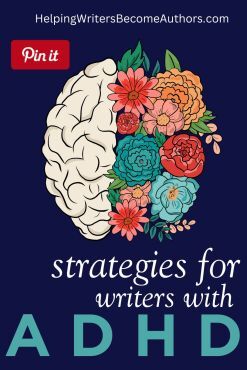 Note From KMW: Earlier this year, I received an email from Bret Wieseler, requesting, “I would love to see a post about writers with ADHD. If you’ve never struggled with it yourself, maybe you know someone who has and can share their thoughts, methods, management strategies, etc. You offer such great insight into the many aspects of being a writer. I’m sure some of your readers, like myself, who struggle with ADHD would appreciate any advice you could offer.”
Note From KMW: Earlier this year, I received an email from Bret Wieseler, requesting, “I would love to see a post about writers with ADHD. If you’ve never struggled with it yourself, maybe you know someone who has and can share their thoughts, methods, management strategies, etc. You offer such great insight into the many aspects of being a writer. I’m sure some of your readers, like myself, who struggle with ADHD would appreciate any advice you could offer.”
I immediately knew who to call on, and I am excited to share a guest post today from a writer who has been a part of my own journey almost from the very beginning. Johne Cook and I met on an online writing forum over 15 years ago, and he remains one of my favorite people to have entered my life in this journey. I have long admired his pragmatism, his insight, and his general cool in the face of the Internet’s insanity. To this day, I will often ask myself, “What would Johne do here?”
He has always been open about his experience as a writer with ADHD—both the challenges and his solutions for overcoming them. Today, I’m excited to have the opportunity to let him share his experience, tips, and resources with you. Enjoy this treasure trove of insight!
***
DiscoveryI wish I knew then what I know now.
For my first 45 years, I thought I was broken: I was a daydreamer, I couldn’t focus on things everyone else thought were important, I fidgeted when I should have been focusing, and I focused intently on the wrong things when people wanted my attention elsewhere.
It’s not like there weren’t clues. I excelled as part of an award-winning marching band in high school where marching in unison was expected, but it was like I was out of step with society.
I had difficulties with organization, time management, and sustaining attention in non-stimulating environments.
I couldn’t make important decisions to save my life. I kept putting things off. I had health problems, money problems, interpersonal problems.
I waited until the 11th hour to begin anything important, and things frequently fell through the cracks.
When I was young, what I wanted most was to be “normal.” But the older I got, the more I believed that was never my reality or calling.
Everything changed the day I heard a piece on NPR called “Adult ADHD in the Workplace.” As they discussed what ADHD was and shared six basic questions, I realized I checked five of the six boxes. They shared a link to a website, and I double-checked my results when I got home.
And then I met with a doctor and confirmed the diagnosis. My entire identity changed.
When I tried two different medications that gave me additional focus at the expense of my creativity (and some other small side effects), I sensed, for the first time, that my creativity was somehow tied to my condition. I valued my ability to sling words, see patterns, and make intuitive leaps that others around me couldn’t.
Because I valued my creativity, I ultimately handled my ADHD through other means that I’ll talk about below.
I realized I could either run from my ADHD or embrace it.
I decided to lean into it.
CommunicationKnowing is half the battle. Knowing this about myself (and knowing that I was special, not broken) changed the way I saw everything.
I started by talking to my wife Linda and my family about what I was like and gradually increased my communication to include my boss and peers at work.
For some of them, what I told them was no surprise, and my biggest pleasant shock was how cool everyone was about it.
Finally, when appropriate, I shared about my ADHD with people I met out in the world. Letting people know what I was like set expectations and minimized confusion.
Once I had that handled, I moved on to the fun stuff.
ADHD as a SuperpowerIf attention deficit is the disorder, attention hyper-focus is my superpower.*
During the pandemic, Linda and I watched an interrupted season of The Amazing Race, mostly for Penn and Kim Holderness from YouTube’s The Holderness Family. It was only while watching the show that we learned that Penn was very ADHD. They referred to his ADHD as a superpower, and I saw with my own eyes how his ADHD helped him with pattern recognition, creative outside-the-box thinking, and hyper-focus during challenges.
And watching Penn at work on the show changed how I viewed my own ADHD.
In short, when managed effectively and embraced for its positive attributes, ADHD can empower writers to harness their inner strengths and achieve success in various domains of life.
Understanding ADHD in the Writing ProcessPeople with ADHD exhibit different symptoms such as difficulty maintaining attention, hyperactivity, or impulsive behavior. For writers, these symptoms can manifest as challenges in organizing thoughts, staying on task, and completing projects.
However, it’s also associated with high levels of creativity, the ability to make unique connections, and a propensity for innovative thinking.
Challenges Faced by Writers With ADHD(The following challenges are common but not universal.)
Distraction: Writing progress can be derailed by the lure of new ideas, social media, or even minor environmental changes.Difficulty Organizing Thoughts: It can be daunting to translate a whirlwind of thoughts into coherent, structured writing.Procrastination: Delaying writing tasks in favor of more immediately rewarding activities.Impulsivity: Starting new projects without finishing current ones can lead to a cycle of uncompleted works.Despite these challenges, many writers with ADHD have developed strategies to thrive.
Strategies and Tools for Writing with ADHDI decided against medication. Once I took medication off the table, I began leaning harder on software tools to become more organized and to remind myself of important things.
Turning ADHD challenges into advantages requires a combination of personal strategies, environmental adjustments, and technology.
Linda and I are a team—she knows to prompt me to use my tech to capture ideas or thoughts in the moment, and I’ve become better at tracking my ideas by noting them in my phone or on my calendar.
Today, there are more tools available than ever.
Here are several approaches:
1. Structuring the Writing EnvironmentMinimize Distractions: Create a writing space with minimal visual and auditory distractions. Tools like noise-canceling headphones or apps that play white noise can help.
Establish Routines: Having a set writing schedule can provide structure and make it easier to start writing sessions.
2. Breaking Down Tasks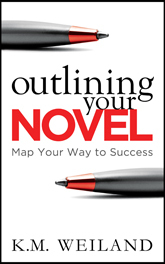
Outlining Your Novel (Amazon affiliate link)
Use Lists and Outlines: Breaking writing projects into smaller, manageable tasks can make them less daunting. Outlining can also help organize thoughts before diving into writing.
Set Small Goals: Focus on short, achievable objectives, such as writing a certain number of words daily, to build momentum.
3. Leveraging TechnologyCalendars: Google Calendar or Fantastical (MacOS only) free up my mind and keep me up-to-date.
Writing Software: Applications like Scrivener or Google Docs offer features to organize ideas, research, and drafts in one place.
Time Management Apps: Pomodoro timers or task management apps like Trello can help manage time and keep track of progress.
Pocket: A social bookmarking service for storing, sharing, and discovering web bookmarks.
SnagIt: A screenshot app on my computer where I capture and store screenshots in folders for later use. Also does optical character recognition (OCR) on text strings, allowing me to replicate URLs with copy/paste.
Note-taking apps: Apple Notes—my second mind that I can access from any of my Internet-connected devices. Notion—a beefier app for more sophisticated note-taking
4. Embracing the Creative ProcessAllow for Free Writing: Set aside time to write without worrying about coherence or structure. This can help capture creative ideas without the pressure of perfection.
Develop a System for Capturing Ideas: Use note-taking apps or carry a notebook to jot down ideas as they come, regardless of the time and place.
5. Seeking SupportWriting Groups: Joining a writing group or participating in writing challenges can provide accountability and motivation.
Professional Help: For some, working with a coach or therapist specializing in ADHD can offer personalized strategies and support.
Success Stories: Writers With ADHDMany successful writers have ADHD and have spoken about how it affects their creative process. Writers emphasize the importance of embracing their non-linear thinking, and view it not as a hindrance, but as a source of creativity and originality:
Agatha Christie: The “Queen of Crime” was known for her prolific output and intricate plots. Some speculate that her energetic writing style and ability to focus intensely on details could be signs of ADHD.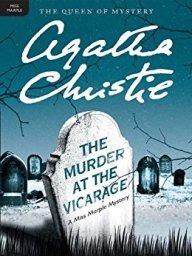
Murder at the Vicarage by Agatha Christie (affiliate link)
Dav Pilkey: The creator of the popular children’s book series Captain Underpants has openly discussed his struggles with ADHD. He credits his condition with helping him be a creative thinker.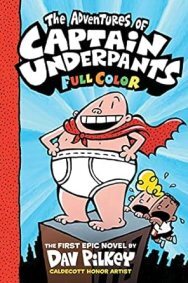
The Adventures of Captain Underpants by Dav Pilkey (affiliate link)
John Irving: The author of The World According to Garp was diagnosed with ADHD as an adult and has spoken about how his condition has both helped and hindered his writing process.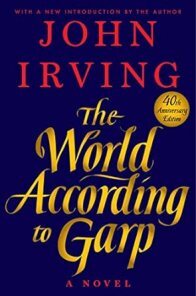
The World According to Garp by John Irving (affiliate link)
ConclusionAs a writer, I don’t see things the way others do. I think outside the box.
My ADHD makes me more:
CreativeEnergeticInnovativeHyper-focused on things that capture my attentionDon’t let anyone tell you ADHD is a curse. You can view it as a gift. You can embrace it.
And then you, too, can lean into it!
Resources and Further ReadingFor those looking to dive deeper into managing ADHD as a writer, or seeking inspiration from those who’ve navigated similar challenges, here are some invaluable resources:
ADHD Questionnaire (a questionnaire based on an internationally respected screening tool for ADHD) 6 Surprising Ways My ADHD Brain Helped Me Write an Award-Winning Novel The Link Between Creativity and ADHD Tool & Tricks For Writers With ADHD ADHD Is Awesome written and read by Penn and Kim Holderness* Hyperfocus is common but not universal.
Wordplayers, tell me your opinions! Can you share any tips or experiences for managing ADHD as a writer? Tell us in the comments!The post Writers With ADHD: Strategies for Navigating the Writing Process appeared first on Helping Writers Become Authors.
April 1, 2024
How to Choose Story Settings: The 4 Basic Types of Setting
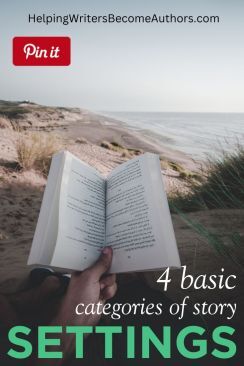 Beyond mere backdrop, story settings are what allow authors to orchestrate meaningful connections among characters. Settings should serve as more than just scenery. They should provide characters with compelling reasons to share the stage with one another. Accomplishing this in a story requires understanding how to strategically choose story settings as meeting grounds that amplify character interactions and deepen the resonance of the narrative.
Beyond mere backdrop, story settings are what allow authors to orchestrate meaningful connections among characters. Settings should serve as more than just scenery. They should provide characters with compelling reasons to share the stage with one another. Accomplishing this in a story requires understanding how to strategically choose story settings as meeting grounds that amplify character interactions and deepen the resonance of the narrative.
When writers choose story settings, they don’t always think about why they are choosing specific settings. You might choose a particular setting for a number of reasons:
It seems like the most obvious or convenient choice to facilitate a scene’s plot events (e.g., a diner as a place to meet locals).It’s an interesting or unique locale that seems fun to explore (e.g., a space station).It seems symbolically resonant to the scene’s thematic content (e.g., a graveyard).Sometimes settings come pre-packaged with certain genres (e.g., expansive worlds in fantasy or the halls of Congress or the White House in political dramas) or certain tropes (e.g., high schools in YA romances or famous world landmarks in international spy thrillers). Sometimes the setting will be the entire point of the premise (e.g., a burning skyscraper in The Towering Inferno or a Russian sub in The Hunt for Red October). Other times, settings are retrofitted into a story based on the needs of the plot (e.g., a claustrophobic setting is required for a climactic encounter between protagonist and antagonist).

The Hunt for Red October (1990), Paramount Pictures.
Although these are legitimate factors, none get at the heart of one of the most important metrics for how to choose story settings. That metric is simply: figuring out which settings will facilitate plot events that keep readers riveted.
At first glance, authors might be tempted to think the best way to rivet readers with setting is simply to choose something flashy and unique. But here’s the thing: flashy and unique settings won’t matter to readers at all if those same settings don’t give them what they’re really here for. And what is that? Simply, they came for the story. They came for the characters and for how those characters act when put in certain situations (aka, the plot).
But, again, let’s drill deeper. After all, you can have characters doing all kinds of plot stuff on the page—running around in exciting settings, exploring, seeing new things, shooting it out with the bad guy, falling in love, all of it—and still not satisfy readers. Story (as opposed to a string of scenes) is a development of character. Setting needs to facilitate that—either by becoming a catalytic “character in its own right” or by creating situations that bring other characters together.
In short, one of the key considerations for how to choose story settings is whether these settings will promote important dynamics between characters.
The General Rule of Thumb for How to Choose Story SettingsUltimately, my top metric for how to choose story settings is simply logistics. Every time you maneuver characters into a setting, you need to ask how it will affect their proximity to other important characters. Closer isn’t always better (as we’ll explore in the next section), but generally speaking, if your most interesting characters are not sharing space for most of the story, you are wasting serious entertainment opportunities.
I have read and watched so many stories that were legitimately great in all other respects, but which failed to entertain, sometimes for chapters or episodes on end, because the author’s choice to separate characters into different settings killed the chemistry and all the good stuff that goes with it. This includes opportunities for dialogue, relational conflict, and the integral plot development created by the mutuality of characters’ cause and effect upon one another.
This post was inspired after I started the second season of Amazon’s steampunk fantasy Carnival Row. Although it struggled a bit after the antag reveal toward the end, Season 1 was a delight—a rare fantasy show that not only developed a unique and cohesive world but kept its plot tightly focused on its primary characters. In it, the primary setting of the Dickensian slum Carnival Row creates a milieu that keeps crossing the paths of ill-fated lovers Philo, a human detective, and Vignette, a “pix” freedom fighter and refugee. Not only does this setup allow the characters’ individual plotlines to become more and more intertwined, it also ensures that the bulk of their scenes offer viewers juicy interpersonal conflict and development—which, in turn, translates to higher stakes in the exterior plot.

Carnival Row (2019-23), Amazon Studios.
Season 2, unfortunately, immediately compromised itself by separating its two main characters. Although they now live together, the plot is engineered to put the characters in separate settings from the beginning. This was clearly designed with the idea that the next phase of the characters’ interpersonal development would be confronting their opposing goals and methods for saving Carnival Row. On its surface, this does not seem like a bad plan for the plot. But the practical outcome is that the primary dynamic that worked so well in the first season is utterly upended in the second. As a result, the relationship simply isn’t as interesting as it was in the first season. Thus the stakes aren’t as engaging, the individual plotlines fall comparatively flat, and the supporting characters who are amped up to try to remedy this can’t save the show.
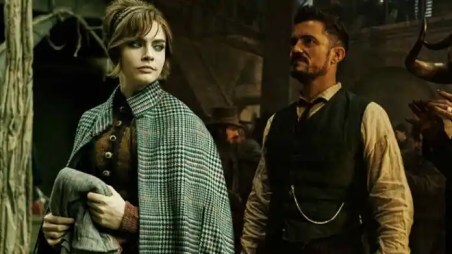
Carnival Row (2019-23), Amazon Studios.
When choosing settings (and plot events, for that matter), it is so important to look beyond the top layer of what seems eye-catching or obvious. Instead, dig down to the actual effect these choices will have on the entire story. Are you choosing settings that bring your characters together—or that force them apart? Are you choosing settings that create and enhance your story’s most entertaining dynamics—or settings that generate scenes readers may, in fact, end up skimming or skipping?
We don’t always think of setting when questioning these aspects of our stories, but we should. Setting can offer tremendous clues into how the story may or may not be developing its tightest and most engaging possibilities.
The Logistics of How to Choose Story SettingsReally, all you need to know about how to choose story settings that enhance your plot’s possibilities is that you want settings that create the cauldron into which all of your story’s best individual elements can be alchemized into an intriguing whole.
To go deeper with this, explore the underlying purpose of any setting in your story. On the surface, the purpose of a setting might seem to be something along the lines of “where the first murder victim is discovered” or “where the protagonist finds the shocking letter from her dead ex” or “the gas station where the characters are robbed.” Deeper down, each of these scenarios creates a specific impact upon the characters and the evolution of their respective positioning in the story related to all other characters. These logistics create dynamics, and dynamics create gripping fiction.
Today, let’s examine four types of setting. It’s interesting (although certainly not necessary) to recognize that each of these setting types is, in fact, inherent to the four sections of story structure (as represented by the Normal World, the Adventure World, the Underworld, and the New Normal World). This doesn’t mean each of the following setting types needs to be used in order or exclusively in alignment with the four sections of story structure. Indeed, you will probably mix and match multiple iterations of these setting types throughout your story. But recognizing the association of these primary archetypes with the larger pattern of story can further underline how each one functions within the mechanics of your plot.
1. Settings That Are Meeting GroundsAny setting that falls into this category is a powerhouse of opportunity for your story. Meeting Grounds are settings designed to bring characters together. This may be for an initial meeting, but it can also create a dynamic that brings characters together over and over again, allowing the relationship to evolve and develop with each new meeting.
The more Meeting Ground settings you incorporate into your story (or the more use you’re able to make of a single Meeting Ground), the more opportunity your story will have for scenes in which interesting characters are forced to come together. Meeting Grounds offer an inherent sense of movement. They are not static spaces, in which characters rest together, but spaces in which they are always coming and going.
Job places are an obvious example, as are schools, in which characters have no choice but to see each other every day. Other types of Meeting Places can be restaurants or bars.
For Example: Casablanca‘s entire setting is one big Meeting Ground, built around a plot in which characters use Casablanca in general and Rick’s Café in particular as a stopping-off point in an attempt to escape war-torn Europe and Africa. This then allows a specific premise in which protagonist Rick is forced to reunite with his lost love Ilsa, who is desperate to escape with her freedom-fighter husband.
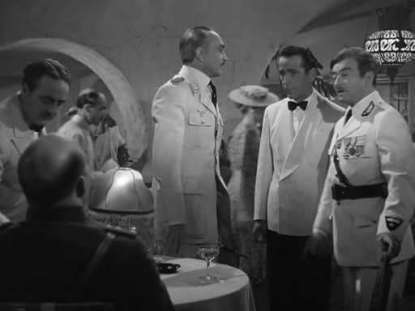
Casablanca (1942), Warner Bros.
*Meeting Ground symbolically aligns with the Normal World‘s function of the First Act.
2. Settings That Are Shared SpaceShared Spaces are those in which characters expect to be together. They may or may not want to be in this space, but they are there because it is mutually beneficial. Shared Spaces are designed to give you the opportunity to keep characters together long enough to develop their interpersonal conflict apart from any bigger external conflict.
Shared Spaces are not so energetically dynamic and changeable as Meeting Grounds, but they offer the opportunity to go deep. They are often appropriate for the “sequel” half of scene structure, which focuses on character reactions. This type of setting may be employed when you want to signify comparative peace within a relationship dynamic. The characters will have the opportunity to come together and learn more about each other, which deepens their bond and raises the stakes.
At its most positive, a Shared Space might be a home cohabited by multiple characters, someplace safe and inviting, where everyone enjoys being together. More negatively, a Shared Space might be a place of refuge, where disparate characters huddle together out of no other commonality than that of trauma and survival.
For Example: In The Hunger Games: Catching Fire and Mockingjay, protagonist Katniss finds herself sharing space with other Panem refugees, including her mother and sister, in the rundown District 13. This setting creates the opportunity to develop characters and relationships that create the stakes for the external action that happens later in the arena.
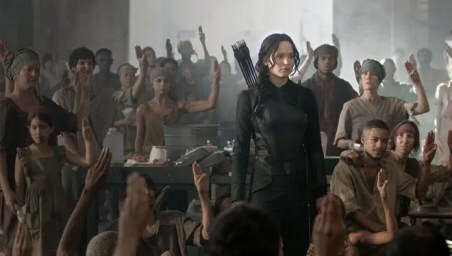
The Hunger Games: Mockingjay, Part 1 (2014), Lionsgate.
*Shared Space symbolically aligns with the “friends and allies” aspect of the Adventure World of the Second Act.
3. Settings That Are Shared DangerEqually interesting and important are settings of Shared Danger. Scenes of Shared Danger create the framework for your heavy-lifting plot scenes, those that move the story forward in the external conflict. Shared Danger needn’t always be physical or dire. It simply represents situations in which characters must turn outward to face external threats.
Characters who share these spaces may be either allies or enemies—either protecting each other from external danger or creating the danger for one another. The important distinction here is that the danger is “shared.” This ensures external plot events are (usually) occurring in a way that creates interpersonal stakes and conflict amongst characters.
Conflict and “danger” can be introduced into almost any type of setting. A home invasion would quickly transform a Shared Space setting into one of Shared Danger. However, it is also possible to engineer specific settings within your story that are designed to enhance conflict by choreographing characters into a space that is either dangerous in its own right or made more so by the presence of antagonistic forces.
War zones, “disaster” settings (such as burning buildings and sinking ships), wilderness settings, and confined or cluttered settings can all be used to enhance physical danger. In less physical stories, settings that emphasize Shared Danger could be tension-filled workspaces or homes filled with difficult family members.
For Example: An archetypal example is the prison in Shawshank Redemption, which traps the protagonist and many others in a hellscape populated by manifold dangers.

Shawshank Redemption (1994), Columbia Pictures.
A more prosaic example would be the Westons’ family home in August: Osage County, where the three grown daughters must endure a reunion with their toxic and volatile mother.
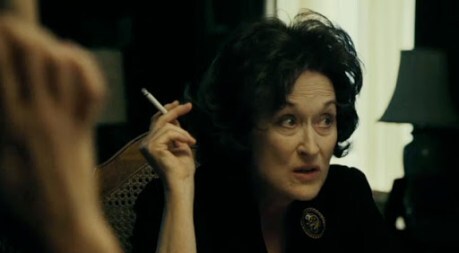
August: Osage County (2013), The Weinstein Company.
*Shared Danger symbolically aligns with the Underworld aspect of the Third Act.
4. Settings That Are a Parting of the WaysSettings that facilitate a Parting of the Ways should be used with caution. On the one hand, they afford the opportunity for deeply complex and poignant scenes, as characters must at least temporarily dissolve the dynamic they have created amongst themselves. However, because these settings also eventuate plots in which interesting relational dynamics are eliminated from the story, they can negatively affect the reading experience unless utilized with understanding and caution.
Parting of the Ways settings are the opposite of Meeting Grounds; they are settings that divide characters from one another. Any type of setting can be utilized to create this effect. Often, the best Parting of the Ways setting for a particular story will be one that offers symbolic and personal import to the characters. More obviously, airports and train stations often function to separate characters from one another.
Parting of the Ways settings may be introduced into a story in one of two ways. The first is that the author deliberately chooses a setting and its inherent scenario to separate characters for plot reasons, The second is that the author incidentally chooses a Parting of the Ways setting that separates the characters for reasons not required by the plot—and then drags readers through unnecessary scenes in which the parting must be played out to satisfy cause and effect.
Although an author can legitimately choose to separate characters for reasons that don’t, in fact, advance the story, this scenario is the one authors must be especially careful of when choosing settings. If any particular setting or plot circumstance creates separation between characters who have an interesting or important relationship dynamic, always step back and ask yourself if this is truly serving the plot and the character development.
For Example: In The Fellowship of the Ring, the Breaking of the Fellowship at Amon Hen is where Frodo and Sam leave the others. This effectively splits the story, advancing three different plotlines from this point on. This is undeniably important for the overall scope of the story. However, the main reason it actually works is because the primary relationship dynamics are preserved—Frodo and Sam remain a unit; Pippin and Merry remain a unit; and Aragorn, Legolas, and Gimli remain a unit.
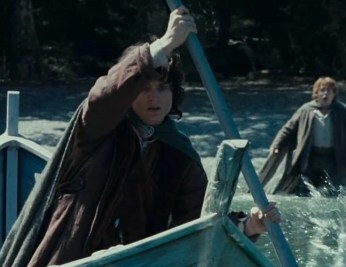
The Lord of the Rings: The Fellowship of the Ring (2001), New Line Cinema.
A generic negative example is one found in countless other fantasy war stories, in which friends are separated to fight on different fronts. This is usually done for no other reason than to give the author an excuse to explore different facets of the story. If it destroys the story’s central relationship dynamic—and especially if it does not replace it with an equally meaningful relationship—it is never worth the expanded plot opportunities.
*Parting of the Ways symbolically aligns with the New Normal World of the Resolution.
***
Writers often select settings based on convenience, novelty, or thematic resonance, but the true measure of a setting’s effectiveness lies in its ability to enhance the dynamics between characters. Examining these four setting types—Meeting Grounds, Shared Spaces, Shared Danger, and Parting of the Ways—shows the nuanced role each plays in shaping character relationships. The strategic selection of story settings hinges on crafting a narrative crucible where every element harmoniously blends and readers are always given more, rather than less, of what is best about your story.
Wordplayers, tell me your opinions! What do you think is the most important consideration in how to choose story settings? Tell me in the comments!Click the “Play” button to Listen to Audio Version (or subscribe to the Helping Writers Become Authors podcast in Apple Podcast, Amazon Music, or Spotify).
___
Love Helping Writers Become Authors? You can now become a patron. (Huge thanks to those of you who are already part of my Patreon family!)The post How to Choose Story Settings: The 4 Basic Types of Setting appeared first on Helping Writers Become Authors.
March 25, 2024
From Lead to Gold: The Alchemy of Character Arc With Carl Jung
 Storytelling is a mystical crucible. Just as the ancient alchemists sought the transformation of base metals into gold, writers strive for the metamorphosis of their characters’ inner selves throughout the story. Alchemy, as explored through the lens of Carl Jung’s insights, can elevate your characters from the leaden weight of initial flaws to the gleaming brilliance of transformation.
Storytelling is a mystical crucible. Just as the ancient alchemists sought the transformation of base metals into gold, writers strive for the metamorphosis of their characters’ inner selves throughout the story. Alchemy, as explored through the lens of Carl Jung’s insights, can elevate your characters from the leaden weight of initial flaws to the gleaming brilliance of transformation.
Last fall, I spent part of my month-long writing retreat in the Berkshires auditing a series of online lectures from the Centre of Applied Jungian Studies. These lectures from leading Jungian experts, collected under the heading “The Mystery School,” explored revolutionary depth psychologist C.G. Jung’s writings and theories about how ancient alchemy stands as a metaphor for psychological transformation. Throughout, my excitement grew as I recognized that the four intrinsic parts of the alchemical/analytical process are also reflected in (surprise!) story structure.
Some of you may remember I posted about this Instagram.
View this post on Instagram
A post shared by KM Weiland (@authorkmweiland)
So what is alchemy, and why should writers care? For me, one of the most delightful mysteries of life is how, when you start paying attention, the theories of story structure and character arc show up everywhere. Not only is this interesting in applying the wisdom of story to life, it also creates opportunities to learn how to tell better stories by examining systems that, at first glance, seem to have nothing to do with fiction.
The series of lectures I watched focused on Jung’s recognition that the four parts of alchemy naturally aligned with his own four tenets of analysis and personal transformation. Even though I teach a Three Act structure, this structure divides story into four equal parts. Particularly when examined from the perspective of character arc, these four parts align naturally and perfectly with the four parts of alchemy/Jungian analysis. The pattern deepens!
I’ve written before about how writers can apply various theoretical models (such as the Karpman Drama Triangle and the Enneagram) to storytelling. Alchemy is yet another window through which to view story. It offers a tool to help us shape our stories into greater verisimilitude. Plus, if you’re a pattern hunter, as I am, it’s just cool!
Today, I invite you to explore the parallels in these systems and to glean new insights into how to craft psychologically resonant stories. I’m just beginning to scratch the surface of this comparison myself and can’t wait to share more about it in the future. For now, here are some of the parallels.
The Four Stages of Alchemy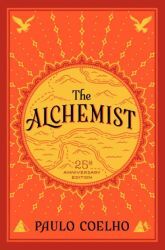
The Alchemist by Paulo Coelho (affiliate link)
Apart from Paulo Coelho’s beautiful fable The Alchemist, most of us probably aren’t super-familiar with the ancient ideas of alchemy. Put simply, the alchemists believed they could discover a scientific method for turning lead into gold. Great tomes were written about their experiments, although there was never any evidence of success (until modern science).
As time went on, Jung and others began to posit that alchemy was really a metaphor for psychological transformation in which the lead of the self may be refined into a higher state of “gold.” In later life, Jung studied and theorized extensively about how the principles of alchemy could be utilized as archetypal wisdom for furthering the analytic process.
Although alchemy can be broken down into further stages, the four main ones are as follows:
1. The Nigredo: The BlackeningIn functional alchemy, this represented the burning away of the initial base dross. The goal was to remove all impurities in a return to the “prima materia” (the original pure) and to emerge with the golden Philosopher’s Stone.
Psychologically, the Nigredo represents the beginning of transformation. It is the Dark Night of the Soul, the death that creates the opportunity for rebirth. It is a period of recognizing and facing one’s shadow as the first step toward integration and wholeness. (And for more on the shadow, check out my brand new email course Shadow Archetypes: Writing Complex Fictional Characters!)
2. The Albedo: The WhiteningThe second step is that of further purification, as the alchemist takes steps to wash away impurities after the Nigredo phase and/or shine a light upon the work to highlight further impurities. Here, the lead becomes silver.
Psychologically, the Albedo represents the beginning of individuation. The period is marked by a recognition of two separate entities that emerged during the confrontation with the shadow in the previous stage and which now invite a movement toward union.
3. The Citrinitas: The YellowingThe third step signifies the appearance of a yellow or gold color. This stage is often associated with the idea of the sun rising, symbolizing the infusion of warmth and light into the alchemical work.
Psychologically, Citrinatus can be interpreted as the emergence of enlightenment, spiritual insight, or a higher state of consciousness. It suggests a progression toward the culmination of the alchemical journey, where the transformative process takes on a radiant and luminous quality.
4. The Rubedo: The ReddeningThe final step represents the culmination of the Great Work, or Magnum Opus. Rubedo is characterized by the appearance of a vibrant red or gold color, symbolizing the attainment of perfection (i.e., the Philosopher’s Stone). This stage is associated with the union of opposites, the integration of purified elements, and the realization of spiritual rebirth. The alchemist, having undergone the challenges of the preceding stages, achieves the highest level of transformation and transmutation.
The Rubedo is a symbol of the soul’s journey toward self-realization and the ultimate goal of alchemy: the reunion and reintegration of soul and psyche into a unified whole.
The Four Stages of Jungian AnalysisAmongst Carl Jung’s mountainous legacy of work, his application of alchemical symbolism to his own systems of psychological analysis and transformation are among the most intriguing. Earlier, he developed a four-part approach to what he called analytical psychology, which he describes in the Collected Works of C.G. Jung, Vol. 16:
Analytical psychology is defined as embracing both psychoanalysis and individual psychology. This approach includes four stages: confession, elucidation, education and transformation.
Jungian psychological analysis involves a profound exploration of the individual’s psyche. The process begins with an examination of conscious experiences, dreams, and symbols in a quest to uncover personal and collective unconscious elements. Archetypes play a crucial role in understanding recurring themes and patterns. The analyst facilitates the individuation process, guiding the individual toward integrating these unconscious elements with the conscious mind.

Writing Archetypal Character Arcs (affiliate link)
This holistic approach aims for a harmonious relationship between the ego and the unconscious, fostering self-awareness and personal growth. Symbolic exploration, dream analysis, and the recognition of archetypal motifs contribute to a deep understanding of the individual’s unique journey toward self-realization and psychological wholeness.
Via his own interest in alchemical texts, Jung eventually realized a comparison between his four stages of analytical philosophy and the four primary stages of alchemy.
1. ConfessionJung:
In the first stage, the secrets or inhibited emotions, analogous to repressed sins that lead to neuroses, must be confessed to enable the patient to regain his wholeness, and his dependence on the doctor, transference, must be severed.
According to Stephen Anthony Farah, MA, co-chair of the International Association of Jungian Studies, and presenter of one of the lectures:
The stage of confession/catharsis in the psychoanalytic process is symbolised in alchemy as the stage of Nigredo…. This is the intellectual function of perception.
2. ElucidationJung:
Next the elucidation of this transference must take place and the patient’s fixation analyzed….
Farah:
The stage of elucidation or illumination in psychoanalysis is symbolised in alchemy as the stage of Albedo…. The intellectual function of discrimination.
3. EducationJung:
The importance of drawing the patient out of himself in a process of education in order to attain normal adaptation is stressed.
Farah:
The stage of education or insight in psychoanalysis is symbolised in alchemy as the stage of Citrinitas…. This is the intellectual function of reason.
4. TransformationJung:
The fourth stage, transformation, is seen to affect both patient and doctor, whose personalities have interacted throughout the treatment. Emphasis is placed on the doctor’s need to engage in self-education and to understand that both he and the patient are in search of a cure that involves not just the body but the entire psyche.
Farah:
The final stage in the process in psychoanalysis is the stage of transformation, symbolised in alchemy as the stage of Rubedo…. And this is the intellectual function of completion.
The Four Stages of Story Structure
Structuring Your Novel (Amazon affiliate link)
And that brings us to the mysteries of story structure. Although story structure may be approached through systems that utilize any number of acts, the reality is that almost any model of story structure can be found to have an underlying foundation of four equal parts. I teach these parts (as part of a Three-Act system) using the following terms. (For a more thorough explanation of all these terms, check out my book Structuring Your Novel.)
1. The First ActThis is the first quarter of the story, in which the primary task is that of Set-Up, as the protagonist’s world and situation is introduced and developed. Like Nigredo, the story begins with a problem that must be solved. It signifies that change is ripe to happen in the character’s life.
This section of the story features the Hook at the very beginning and the Inciting Event halfway through (around the 12% mark). It ends with the First Plot Point as the Threshold of No Return between the Normal World of the First Act and the subsequent Adventure World of the Second Act.
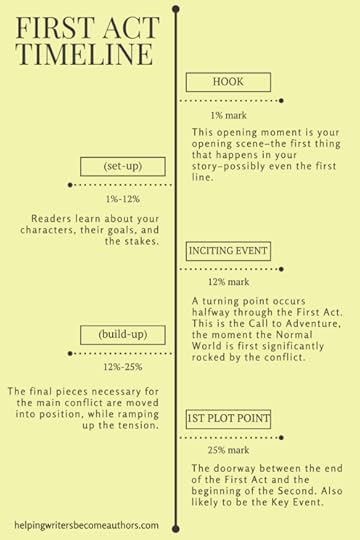
As the second quarter of the story, the First Half of the Second Act spans from the First Plot Point at the 25% mark to the Midpoint at the 50% mark. It is divided by the First Pinch Point at the 37% mark. The First Half of the Second Act represents a period of Reaction, in which the protagonist must respond to the conflict introduced in the First Act.
It correlates to the Albedo as a time of purification, as the protagonist refines methods for overcoming the conflict and achieving the plot goal.
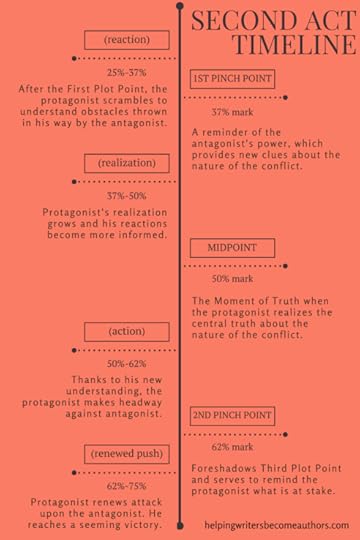
Initiated by the Midpoint at the 50% mark, the Second Half of the Second Act represents a period of Action. Utilizing the insights gained in the Midpoint’s Moment of Truth, the protagonist shifts out of the Reaction of the previous section and into a period of Action that spans the next quarter of the story until the Third Plot Point at the 75% mark. It is divided by the Second Pinch Point at the 62% mark.
Like Citrinitas, the Second Half of the Second Act, represents a “brightening” of the protagonist’s potential within the conflict. The trials of the previous two sections are beginning to bear fruit in the external plot as the character makes more informed and effective choices about how to proceed toward the goal.
4. The Third ActBeginning with the Third Plot Point at the 75% mark, the Third Act represents the final quarter of the story. It begins with a period of Recovery, in which the protagonist adjusts to the startling new level of responsibility demanded by the events of the Third Plot Point. It ends with a period of Confrontation, leading to the Climactic Moment, in which the story’s conflict is decided by a final confrontation between protagonist and antagonistic force.
Like Rubedo, the Third Act represents the culmination of the entire process and, if successful, the emergence of a new status quo in both the character’s inner and outer worlds.
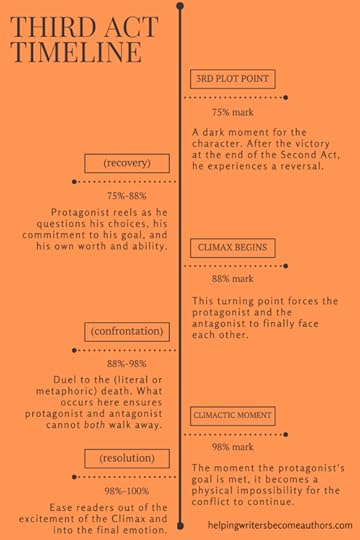
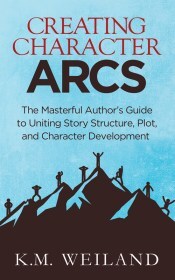
Creating Character Arcs (Amazon affiliate link)
And now we get to the really juicy stuff! After all, what is character arc if not psychological transformation and, therefore, alchemy? (For a more thorough exploration of all the following terms, check out my book Creating Character Arcs.)
1. The Lie the Character BelievesLike the Nigredo, a Positive-Change Arc begins in the darkness and heaviness of the Lie the Character Believes. This is a limited perspective of the world that, although it may once have been reasonably functional, is now creating dysfunction in the character’s ability to move through the world in a positive way. To maintain it would inevitably create destruction. The irony is that overcoming it also necessitates a certain destruction as well, as the character destroys the self that was and builds the self that will be.
In Jung’s identification of Nigredo with the Confession phase of analysis, we can also see how the Lie the Character Believes emerges in the First Act of the story as something that is ready to be “confessed.” Up until the events that begin the story, the Lie has existed as a silent and relatively harmonious part of the character’s psyche. Up until then, there is nothing to be “confessed.” But as the Lie begins to rise to the surface as a Lie (i.e., a perspective that is no longer true), “secrets,” “inhibited emotions,” “repressed sins,” or “neuroses” may all emerge as symptoms of the impending need for change.
2. Character Begins to Explore Limitations of the LieIn the First Half of the Second Act, the character will be challenged to explore the limitations of the Lie. Much of the “Reaction” aspect of this part of the story has to do with the character’s experimentation in new ways of seeing and being in the world. The focus here is still more on the limitations of the Lie than the possibilities of the corresponding Truth. Just as in the Albedo phase, the character is, in essence, washing away impurities over and over again, shedding bigger and bigger pieces of the Lie.
Jung identifies the Albedo with the Elucidation phase of analysis, which we see mirrored clearly here. The First Half of the Second Act is a period in which the character is learning all the ways in which the old Lie-based mindset is ineffective. More than that, the character is also beginning to learn about a contrasting Truth that offers more effective ways of achieving goals and overcoming conflict.

From the Creating Character Arcs Workbook.
3. Character Recognizes Truth (But Doesn’t Yet Fully Reject Lie)
Creating Character Arcs Workbook
The Second Half of the Second Act begins with the Midpoint (or Second Plot Point). This plot point is characterized by its all-important Moment of Truth, in which the character’s efforts to overcome the Lie in the first half of the story are rewarded with a flash of insight. Symbolized by Citrinitas, this flash of insight is like the rising of the sun, bathing everything in light and understanding.
Everything learned up until this point distills into a burgeoning new perspective—the story’s thematic Truth. Throughout the Action of the Second Half of the Second Act, the character will be able to use this new grasp on the Truth to move forward more and more effectively. However, the character is not yet able to fully relinquish the old way of being. Even though the character has seen through much of the Lie, aspects of this limited perspective remain.
Jung corresponds Citrinitas with the Education phase of analysis. Unlike the previous Elucidation, which is largely something that just “happens” as a natural evolution of circumstance, the Education phase indicates the necessity of intention and will. In this Action section of the story, the character takes more and more responsibility for choices and actions rather than simply accepting and reacting to whatever happens.
4. Character Embraces New TruthThe final section of the story, the Third Act, opens with a crucible in which the character’s new Truth is tested. From there, the character must prove able to complete the transformation by fully overcoming the limited perspective of the Lie and embracing the expanded new Truth. Like Rubedo, this stage represents the achievement of perfection. In overcoming the Lie in exchange for the Truth, the character has reclaimed lost shadow parts and reintegrated them into a stronger and more cohesive whole.
Jung’s approach to analysis ends with Transformation. Story is ultimately an exploration of change in character, which is, of course, nothing more or less than psychological transformation.
***
Just as the alchemists sought the Philosopher’s Stone, writers strive for the perfect character arc. Not all stories will feature Positive-Change Arcs—and therefore won’t correspond precisely to alchemy or analytical psychology—but the patterns that emerge here offer insight into the baseline transformation upon which all character arc variations riff. Like the alchemists turning lead into gold, storytellers can transmute a character’s flaws into brilliance, revealing the profound harmony between psychological transformations and captivating narratives.
Wordplayers, tell me your opinions! What do you think is the most intriguing aspect of the alchemy of character arc? Tell me in the comments!Click the “Play” button to Listen to Audio Version (or subscribe to the Helping Writers Become Authors podcast in Apple Podcast, Amazon Music, or Spotify).
___
Love Helping Writers Become Authors? You can now become a patron. (Huge thanks to those of you who are already part of my Patreon family!)The post From Lead to Gold: The Alchemy of Character Arc With Carl Jung appeared first on Helping Writers Become Authors.
March 18, 2024
Checklist for Beginning Your Story: Introducing Your Characters
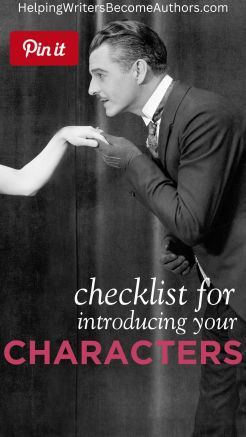 Hello, everyone, and welcome! Today, we’re going to be talking about beginnings and specifically about how to introduce your characters in the beginning of your story, how to hook readers with your character, and how to set up all the important parts of your character’s development and arc that will happen in the rest of the story.
Hello, everyone, and welcome! Today, we’re going to be talking about beginnings and specifically about how to introduce your characters in the beginning of your story, how to hook readers with your character, and how to set up all the important parts of your character’s development and arc that will happen in the rest of the story.
If you prefer, you can watch today’s content on YouTube or listen to the podcast. This post was actually inspired by a couple of questions I received about endings, which I’m going to talk about in a future video. But first I thought I’d bookend it by introducing some important considerations about how to begin your story. Ultimately, a lot of problems we may have with the ending of our story come down to things that we didn’t quite set up right in the beginning. If you can get the beginning of your story right, then generally speaking, the rest of the story will work out pretty well. By the time you get to the ending, everything will fit together and make sense.

Outlining Your Novel (Amazon affiliate link)
However part of knowing how to begin your story has to do with knowing how you want to end your story. And not all of us know that. Sometimes we will be better off figuring out how we want the story to end in an outline or just figuring it out in our heads before we sit down to write it. That can answer a lot of questions about the best choices for the beginning.
If that’s not how you work or this is not how this particular story came to you, then once you do reach the end in your first draft, you’ll want to circle back to the beginning and make sure that you’ve considered some of the things we’re going to talk about and how they tie in with the ending you have created and whether your beginning sets up the ending in the way you want it to.
I’m going to be talking about beginnings in two different videos. This month, we’re going to talk about considerations for character in the beginning. In the next video, we’ll talk about considerations for plot and creating a structural hook for your story.
Beginnings are so complex. There’s so much you have to think about and juggle in the beginning of a story. Not only is it a scene in its own right, and not only does it carry this momentous burden of needing to hook readers in and convince them to invest in your story and keep reading, but you also have to lay the groundwork for everything that follows. You also have to create this perfectly orchestrated setup that then allows the dominoes in the rest of your story to knock into each other in a perfect line.
>>Click here to read Your Ultimate First Chapter Checklist, Pt. 1: Hooking Readers
>>Click here to read Your Ultimate First Chapter Checklist, Pt. 2: Writing the Opening Scene
>>Click here to read Your Ultimate First Chapter Checklist, Pt. 3: Introducing the Story
There’s a lot to think about. I always say the beginning is the hardest part of the story, in light of how complex it is and just how many moving parts you have to juggle and how much pressure there is on getting it right. If you don’t get it right, the rest of the story can be great, but nobody’s going to read it.
Introducing Your Characters in a Characteristic MomentThe first thing to think about when introducing characters in the beginning of your story is how to use two particular techniques. The first one is the Characteristic Moment.
Not all stories put their primary focus on character in the beginning. However, for my money, for 90% of stories beginning with character is your best bet. This is because readers are there for the characters. At the very least, characters are the avatars of the action unfolding in the story. Readers want to be able to relate to them and have somebody we’re interested in and think is going to keep our attention as we continue with this story, whether we’re watching a two-hour movie or investing maybe 10–12 hours in reading a novel.
Whenever possible, open with a strong emphasis on character. Specifically, if it’s possible, open with your protagonist. This isn’t possible in all stories. But if you can open with your protagonist, particularly in a novel, it gives you the opportunity to hook readers on a personal and relational level before you get into the action.
This is particularly true for written stories—narrative fiction—in which any action will always have to be explained. It’s not the same experience as when you’re in a movie. When a movie is very visual, that in itself can often be a great hook. Also keep in mind when you have someone who’s deciding if they want to read your book, they’re not as captive an audience as they are when they’ve started a movie. Particularly if they’re in a movie theater, they’ve paid for it, they’re sitting there, they’re going to watch it. This means movies often have a more leisurely opportunity for unfolding the first couple of scenes and the introduction of the character.
Whereas in a book, readers start out skimming and flipping through pages as they’re deciding, Is this worth my time? Am I going to be able to ground and get present and actually pay attention to this book? Is it going to grab my attention?
Dialogue is one of the single best ways to hook readers. Dialogue necessarily indicates there are characters on screen. If you begin with your protagonist, who is presumably the most interesting person in your story, this person should be able to create the impetus and the momentum to convince readers to follow them throughout the entire plot.
Your protagonist is your single greatest hook. Beginning with your protagonist kills two birds with one stone. To begin with, you’re introducing this very important character and the situations around them. But also ideally, whatever they’re doing is a fantastic hook that grabs readers and pulls them in. (We’ll be talking more about the structural hook in next month’s video.)
If you’re beginning your story with your protagonist, the Characteristic Moment is how you introduce your character to readers. Generally speaking, a characteristic moment is the first dramatized scene in which your protagonist takes part. Ideally, what we’re trying to accomplish in a Characteristic Moment is a dramatized event that shows readers who this person is. It demonstrates key aspects of their personality and, more specifically in this opening scene, it demonstrates why they’re interesting and why readers are going to find this person entertaining and want to follow them throughout the story.
Sometimes when writers hear a list of the things to include in your beginning (e.g., the Characteristic Moment, the Hook), they start thinking of scenes that check those boxes, but that are arbitrary. These can feel tacked on, like they’re there just to introduce the character or they’re there just to hook the reader, rather than being an integral part of the scene or the chapter and the entire story that follows.
As you’re going through a checklist like this for your story’s beginning, make sure you’re not just thinking, Oh, this would be a cool scene. I’ll stick it at the beginning of my story and that’ll pull readers into the main story. Rather think, How can I create a Characteristic Moment or a Hook that functions as that first domino leading into the rest of the story, and that also dramatizes the key aspects of the character and their personality and their relationships and actually matters to and affects the plot that follows?
Introducing Characters via Their RelationshipsOne of the best ways to create a dynamic Characteristic Moment is to also think about what kind of relationships you can bring into this opening scene.
Ideally, an opening scene should feature a relationship that is important to the story. It should be a scene that initiates conflict. It should move the plot toward that main conflict. You want this relationship to be pertinent.
There are many advantages to bringing a relationship dynamic into the first scene. The first is simply entertainment value. Opening with more than one character means you’re starting with at least two people, which gives you the immediate opportunity for dialogue. I like to say dialogue is the purest form of showing rather than telling because dialogue is literally what’s happening. It’s the actual words coming out of your characters’ mouths. You don’t have to describe dialogue at all.
Introducing Characters via DialogueOpening with dialogue gives your story’s beginning a sense of immediacy. You’re immediately featuring one of the most entertaining aspects of any story. Dialogue gives you the opportunity for conflict and witty confrontation. It’s a perfect way to show readers who your characters are. You’re showing not telling and allowing readers to see how these characters interact with each other, how their personalities come out through their words, what their default argument tactic is, and how they move through a situation.
Within the context of your story, this relationship dynamic in your first chapter could be between friends and allies or it could be between frenemies at work. It could be cop buddies out on their job. It doesn’t necessarily have to be the primary relationship within the story. Obviously, in a lot of stories (romances, for example), the protagonist doesn’t meet the primary relationship character until later. But you want to pick characters and situations that ideally will show up again later in the story or at the very least foreshadow or mirror situations that will become pertinent and important later on. One of the first things I think about when planning an opening scene is How can I bring in an important relationship character and get the dialogue going as soon as possible?
Introducing Characters via MovementAnother quick tip to energize an opening scene is to think about how you can keep the characters in motion. How can they move? That doesn’t mean they have to be in a kung fu fight or some big action scene right away. Very often that isn’t the best choice, particularly for written narrative fiction. But see if you can impart a sense of movement.
Maybe your characters are walking across the room rather than sitting at a desk or something like that. This immediately creates so much more opportunity to dramatize the world they’re in and to dramatize the characters and show their personality. Always think about how you can keep characters moving, if at all possible, within the context of that opening scene.
Introducing Characters via Their Character ArcsWhat factors do you need to be thinking about to make sure these character introductions feel integral to the story? Again, you’re not just trying to think of the most entertaining scene you could possibly dream up and stick it at the beginning of your story. You’re trying to think of the most entertaining scene ever that actually introduces important elements and sets up the story to come. so it all feels like part of a cohesive whole. How you introduce your character in the Characteristic Moment is laying the groundwork for the character arc that will follow in the story.
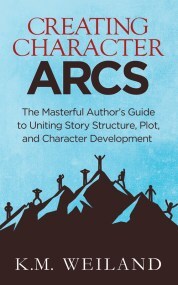
Creating Character Arcs (Amazon affiliate link)
The foundation of character arc is the conflict between one mindset and another, between the Lie the Character Believes (a limiting perspective about the world that is now becoming dysfunctional as this story begins) and the thematic Truth (the opposite of the Lie, a more expanded perspective that will allow the character to operate more functionally within their life and within the purview of the plot).
In some stories, characters will overcome the Lie and embrace the Truth. In other stories, they won’t. It depends on what kind of arc that you’ve chosen to tell in your story. Either way, you want to be able to introduce the character’s relationship to the Lie and the Truth in the beginning of your story.
As you’re thinking about what Characteristic Moment is best to begin your story, also think about one that will dramatize your character’s relationship to the Lie. They might start with a belief in the Lie and arc into a belief in the Truth. Or they might arc into a more rigorous relationship with the Lie, where it gets worse. If they’re in a Positive Change Arc, and they begin with this limiting perspective, with the belief in the Lie, then think about ways you can dramatize that in the beginning of the story. (Remember some Lies are very subtle. They’re not always horrible things about people with horrible lifestyles, who are doing really destructive things to themselves or others.)
Think about how you can start to show your character’s relationship to the Lie? The beginning of the story is what kicks the arc all off. There will be a tension suddenly created in this character’s life that hasn’t been there before and that is creating the need for them to evolve out of the limitations of this Lie into a more expanded and functional and effective viewpoint. They’ll be learning this over the course of the story through the action in the plot. This is really what needs to be dramatized within the Characteristic Moment. The point of the Characteristic Moment is that you’re showing readers who this person is. And at the beginning of a Positive Change Arc, this person is someone who believes the Lie and is now beginning to find that ever so slightly uncomfortable. The circumstances of their life are changing to allow this potential for evolving into a more expanded Truth.
If you’re telling a Positive Change Arc and depending on how deep your character is in the Lie, it can be nice to show the potential the character has for evolving into the Truth. Again, a lot of this comes back down to this inner tension between the Lie and the Truth. The character believes this lie, but now that the story is beginning, something feels a little scratchy, a little itchy inside. There’s cognitive dissonance. If you can emphasize that in your opening scene, this is a great opportunity for pertinent conflict that builds right into the need for the external plot conflict.
How can you dramatize your character’s relationship to the Lie in the Characteristic Moment? How can you bring that out? How can you show readers how this Lie is affecting the character? How has it been functional up to this point in their life? How it is now becoming increasingly dysfunctional? And how will it eventually become blatantly dysfunctional to the point where they have to do something once they reach the Inciting Event and the First Plot Point later in the First Act.
Introducing Your Characters via ThemeIf you begin your story with this consciousness about the Lie and the Truth, you will also be introducing your story’s most important thematic elements. This will help you create both thematic and tonal unity with everything that follows in your story.
You’re setting a tone for what’s to follow in the story, for how your character interacts with this life. Maybe your story’s beginning is quite funny, or maybe it’s very serious. Maybe it offers life and death stakes, or maybe it’s ironic. Look for whatever tone you’re trying to achieve within your story that is appropriate for how you’re dealing with this character’s arc. You have the opportunity to lay the foundation for that in the beginning of your story.
If you’re able to do that, it’s an amazing way to create a sense of cohesion for your entire story. From the very beginning, there will never be a sense that this is a prologue or just something that’s tacked on to get the necessary introductions out of the way. It will feel very real and very pertinent. It just plunges readers right into the heart of what you’re trying to tell right from the beginning.
Introducing Your Characters via SettingOne final thing to think about in regards to how you introduce characters in the beginning of your story is the setting. The First Act symbolically takes place in the Normal World. The Normal World contrasts the Adventure World of conflict in the Second Act. This is true no matter what your character’s adventure is, even if it’s very prosaic and the character isn’t going on a quest or something like that.
In the beginning of the story, the Normal World is all the characters have known so far. Ultimately, what you’re symbolizing is their initial perspective. The Normal World represents the world of the Lie. It is a world in which the character has been able to operate with this limited mindset because it’s an equally limited world. The Normal World can be a literal “world” if you’re telling science fiction, or it can be something really subtle. The characters may actually leave this setting at the end of the First Act, but the change can be as subtle as something about the setting itself shifting. And that shift could simply be the character’s perspective of the Normal World.
The main point of considering your Normal World in your story’s beginning is to think about how you can choose a setting for this opening scene and this opening dynamic with your protagonist that dramatizes the opening situation they’re in their life.
Where do your characters find themselves at the beginning of the story?How is this situation good?How is it bad?Why is it about to change?That’s what’s what happens in the story. Everything changes. In the beginning, you’re showing readers “here is what’s going to change.” You’re showing them the place from which your character is going to arc.
You truly cannot have a powerful character arc or show a powerful change within a story’s plot unless you lay the groundwork and set the foundation for what is going to be changed or even destroyed. This lays the groundwork for stakes. It sets the context for why this story needs to happen and also how difficult it inevitably will be for the characters. This has the ability to deepen readers’ investment in what you’re writing about. Think about ways you can choose a setting or highlight aspects of your story’s main setting that bring to life your character’s dilemma—this growing tension between their limited perspective and the Truth they’re going to be evolving into.
We see this clearly in dystopian stories which often create an entirely symbolic setting to represent the character’s inner wasteland. As the character enters the Second Act, sometimes that changes and sometimes it doesn’t depending on what type of arc the character is taking. Hunger Games comes to mind. The setting completely changes into this grotesquely corrupt and glitzy and glamorous world in the Capitol. That’s a stark contrast to where we see Katniss in the beginning, in her district, which is run down and everybody’s starving.
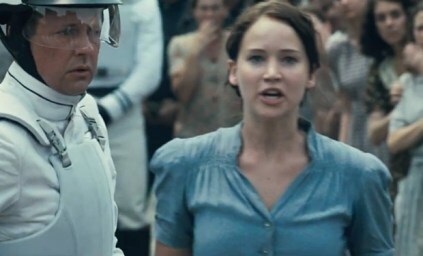
The Hunger Games (2012), Lionsgate.
That’s a perfect example of how to create a setting that creates Characteristic Moments. It sets up the necessity for the plot conflict to come and shows how your characters will interact with it based on their relationship to the story’s primary thematic Lie and Truth.
***
Beginnings are so complex. I hear from writers who get frustrated with their beginnings and feel like they just can’t get them right. And I completely relate to this. I’ve never been happy with any beginning I’ve written ever! Remember to give yourself a little grace. Writing a good first chapter is an art form unto itself. Even if you are a master of all the chapters that come after, that first chapter remains a tough little nut to crack.
Next month, we will discuss considerations for setting up the plot in your story’s beginning and first chapter. And then after that, I will be talking about endings and how we can bring everything full circle. Beginnings and endings are linked. If you can set up one correctly, then you have all the tools you need to set up the other correctly.
Have a good week and happy writing!
Wordplayers, tell me your opinions! What techniques are you using for introducing your characters in the beginning of your story? Tell me in the comments!Click the “Play” button to Listen to Audio Version (or subscribe to the Helping Writers Become Authors podcast in Apple Podcast, Amazon Music, or Spotify).
___
Love Helping Writers Become Authors? You can now become a patron. (Huge thanks to those of you who are already part of my Patreon family!)The post Checklist for Beginning Your Story: Introducing Your Characters appeared first on Helping Writers Become Authors.
March 11, 2024
Announcing the Shadow Archetypes Course! (+Giveaway)
Get ready, because I’ve got something exciting to share with you!
This winter, I’ve been working on a new resource for all of you. I’ve been diving once again into the world of archetypes, exploring the psychology of shadows, and studying character transformations—all of my favorite things!
And now, I’m thrilled to announce the launch of my eight-week on-demand email course Shadow Archetypes: Writing Complex Characters.
I know many of you have been waiting for this, and I can’t wait to take this journey with you! If you’ve already explored my book Writing Archetypal Character Arcs: The Hero’s Journey and Beyond, this course takes the exploration even deeper. We’ll dive into how each pair of shadow archetypes plays a crucial role in helping the primary archetypes (Maiden, Hero, Queen, etc.) overcome weaknesses and temptations on their way to fully transforming into their next iteration of empowerment.
Are You Ready to Explore the Shadows?Explore the intricate world of character development with Shadow Archetypes: Building Complex Fictional Characters, an eight-week email course.
Delve into the psychological journey and inner conflict of the six archetypal arcs, from the Maiden to the Mage. Discover the profound interplay between each archetype’s passive and aggressive shadows, and how each archetypal arc is about overcoming the cowardice of its passive shadow while resisting the temptation of its aggressive shadow in order to integrate a new level of true power.
This course is ideal for aspiring authors, fiction writers, creative storytellers, and screenwriters wanting to master the art of crafting compelling characters who add depth to their narratives. Whether you’re a seasoned writer or just beginning your literary journey, this in-depth approach to character arcs will transform your storytelling abilities, providing you with practical applications for various fiction formats, from novels to screenplays.
The course is structured into eight comprehensive lessons, each one intentionally designed to impart the wisdom of storytelling through the lens of shadow archetypes. Every week, you will receive an email with new resources and insights to elevate your storytelling and bring your characters to life in ways you never thought possible. You can also access the lessons as they become available in your account dashboard.
Here’s What This Course Has in Store for You!Ready to start shadow walking?  Learn more about the twelve shadow archetypes right here.
Learn more about the twelve shadow archetypes right here.
These in-depth weekly text lessons, delivered straight to your inbox, will offer you:
A deeper understanding of shadow archetypes and their essential role in writing enriching character arcs, making your characters breathe with authenticity and complexity.Insight into how to skillfully portray a character’s weaknesses and temptations to create a character arc that is as human and relatable as it is transformative, inspiring readers to navigate their own shadows with courage and hope.Mastery over the craft of weaving compelling character journeys that not only advance the plot but resonate on a personal level with each reader.The ability to navigate the psychological depths of the six life arcs.Knowledge of how the interplay of passive and aggressive shadows forms the crucible for character transformation and empowerment.Practical tools to apply these insights across various fiction genres—everything from romance to fantasy to drama to action—enabling your narratives to flourish, whether in a novel or a screenplay.Why Choose This Course?Empowerment Through Mastery: This course empowers you with techniques to master the subtleties of the human psyche, elevating your writing to a realm where characters live and breathe beyond the confines of the page.Inspirational Guidance: Each lesson is crafted not just to inform but to motivate, urging you to explore the uncharted depths of your creative potential.Unique Focus: The deep dive into shadow archetypes, particularly within the context of the life arcs, presents a niche yet crucial aspect of character development often overlooked in mainstream writing advice.FAQsWhat are archetypal character arcs?Archetypes are symbols representing specific experiences that are recognized as culturally or even universally potent. Archetypal character arcs explore transformational periods within the human life. Specifically, I teach a cycle of six important archetypal character arcs, alternating between feminine and masculine and chronologically advancing through the human life.
These archetypes are Maiden and Hero (the archetypal journeys of youth, concerned with individuation and independence), Queen and King (the archetypal journeys of maturity, concerned with power and responsibility), and Crone and Mage (the archetypal journeys of elderhood, concerned with the mysteries of life and death). Each archetypal journey represents a crucial initiation within the human experience.
What are shadow archetypes?Shadow archetypes, based on Carl Jung’s psychological theories, represent the darker, unconscious facets of a character’s personality that are often denied or rejected. In storytelling, these archetypes are powerful tools for character development and conflict, driving a character’s inner struggles and influencing their actions and choices, thus contributing to a transformational arc.
For instance, a Hero character will grapple with both the passive shadow of the Coward and the aggressive shadow of the Bully. These reflect both the potential for fear and the misuse of power, which the character must confront and integrate to realize full heroic potential. The exploration of this inner conflict results in multi-dimensional characters that are more realistic and relatable, providing opportunities for dramatic tension and plot development.
What genres are archetypes appropriate for?Any and all genres! Even though the symbolic language of archetypes often evokes the fantasy genre, these archetypes show up in all stories of all types, just as they also show up in all of our personal lives. Examples from many different types of stories are listed throughout the course.
Will there be beat sheets like in your book?Each archetypal study will offer a concise beat sheet you can use for guidance in crafting your own arc. These beat sheets can be used to bring further nuance to the beat sheets offered in my book Writing Archetypal Character Arcs, which focused more on the external conflict with antagonists. The beat sheets provided in the course show how your characters’ inner relationship to the shadow archetypes may evolve over the course of their character arcs.
How is the course delivered?This is an email course. It will be delivered to your email (the address you use when checking out) once a week. The first lesson will arrive shortly after checkout and subsequent lessons will arrive on the same day of the week in the future.
You will also have access to the course material in your account dashboard. Lessons will become available there at the same time you receive a new email.
Can I do the course at my own pace?Yes! You can access the course whenever you like.
How long is the course?The course lasts eight weeks. Each lesson provides a lengthy text for you to read and study at your own pace.
Can I ask questions during the course?Absolutely! Just hit reply on any email you receive and ask me your question.
Do I need any prior knowledge of psychology or literature to benefit from this course?Not at all. Although you can think of this course as Archetypes Level 2, since it builds upon the theories and system I’ve discussed previously in my blog series and my book Writing Archetypal Character Arcs, the course is structured to be accessible and enlightening to both seasoned writers and those new to the craft. Your passion for storytelling is the only prerequisite! If you haven’t read anything about archetypes before this, don’t worry. The first lesson will cover the necessary basics to help you access all the juiciness in the subsequent lessons.
Can this course help me with my personal growth, not just my writing?Absolutely! The themes and principles covered within the Shadow Archetypes Course transcend the scope of writing to offer valuable lessons and introspective tools for personal development.
Start Exploring Your Characters’ Shadows!As you progress through each lesson, honing your skills, you will steadily grow your ability to craft deeply resonant psychological journeys for your characters. You’ll acquire a profound understanding of their emotions, motivations, and inner struggles, enabling you to create narratives that captivate and engage readers.
Ready to start shadow walking?  Learn more about the twelve shadow archetypes right here.
Learn more about the twelve shadow archetypes right here.
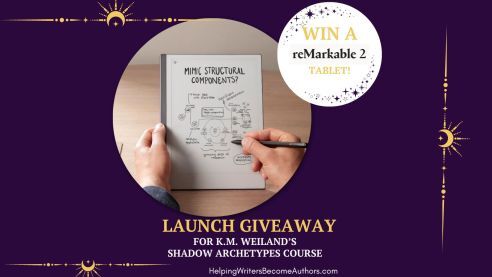
Of course, what would be a launch without a prize giveaway? Today, I am giving away a reMarkable 2 tablet* (value $279). According to their site:
Replace your notebooks and printouts with the only tablet that feels like paper. All your handwritten notes, to-dos, PDFs, and ebooks, perfectly organized and in one place.
I asked you all to tell me what prize you’d like me to give away for this launch, and quite a few of you wanted me to give away another reMarkable 2 tablet! Good luck to you all!
*The refurbished model, in support of circular economies.
To EnterContest will end Sunday, March 17th, and winners will be announced Monday, March 18th. Enter below! (Note: no purchase is necessary to enter.)
Finally, I must send out a huge thank you to my beta testers: Cain Gonzales, Christopher Pridgen, Laura Kathryn McRae, Julie Packer Samms, Sue Davis, KJ A. Lewis. Thank you!
Good luck to everyone in the drawing, have fun, and thank you for helping me celebrate the launch of the Shadow Archetypes course!
Happy writing!

Click the “Play” button to Listen to Audio Version (or subscribe to the Helping Writers Become Authors podcast in Apple Podcast, Amazon Music, or Spotify).
___
Love Helping Writers Become Authors? You can now become a patron. (Huge thanks to those of you who are already part of my Patreon family!)The post Announcing the Shadow Archetypes Course! (+Giveaway) appeared first on Helping Writers Become Authors.
March 4, 2024
6 Tips to Write Deeply Emotional Fiction
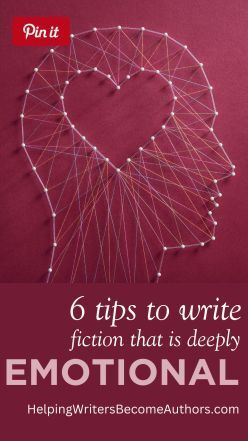 In the tumultuous sea of storytelling, where the tides of emotion ebb and flow, writers get to discover the profound art of learning how to write deeply emotional fiction. Emotions are the vibrant threads that weave a connection between characters’ souls and readers’ hearts. To navigate this intricate terrain, let us uncover six tools to infuse your fiction with an emotional resonance that lingers.
In the tumultuous sea of storytelling, where the tides of emotion ebb and flow, writers get to discover the profound art of learning how to write deeply emotional fiction. Emotions are the vibrant threads that weave a connection between characters’ souls and readers’ hearts. To navigate this intricate terrain, let us uncover six tools to infuse your fiction with an emotional resonance that lingers.
Every once in a while I share a post that elicits an unusual number of heartfelt personal emails from readers. A post from last October—“‘There and Back Again’: The Lord of the Rings and the Power of Despair in Fiction“—was one of those posts. In it, I shared my own powerful and deeply personal connection with this beloved classic and was honored to hear from so many of you who had experienced something similar either with Lord of the Rings or with another equally important story. Amongst those emails was the common query, “How do I write those deep emotions in my own fiction?”
Lev Vellene wrote:
I would like to ask you this one thing about your recent blog-post about despair vs hope, (and you already pointed to some ways of not doing it the wrong way, anyway!): How can any of us who never really experienced personal despair describe, or transcribe, that to others? I went there in my own way long ago, and being male, I never (of course!) talked about it (naturally…  ). But that was my subjective experience, after all. Do you feel there is a common feeling of human decency that we will all tap into, when we read moving novels/stories?
). But that was my subjective experience, after all. Do you feel there is a common feeling of human decency that we will all tap into, when we read moving novels/stories?
In response to this question, I initially posted a short video on YouTube, talking about the subjectivity of writing with emotion:
However, I received the question from so many of you that I decided I would offer a full post, digging into some tools and methodologies that can help writers tap a deeper emotional level in their stories.
The Challenge of Learning How to Write Emotional FictionBut first, why write emotional fiction?
The short answer is simply that fiction is inherently emotional. Even when that emotion is just a feeling of baseline satisfaction, audiences want to feel something. Indeed, back in the olden days, plays originated specifically as a way to create a remedial experience of catharsis in viewers. This means stories are designed to help us feel our feelings. For most of us, when we think of the stories that have most powerfully impacted our lives, it is the emotional experiences they gave us that make them so memorable and meaningful.
As writers, it behooves us to ask these questions about how we can create stories with the potential to emotionally impact our audiences. But, as the questions themselves indicate, this isn’t always an easy proposition.
The kernel of truth at the heart of the common bit of writing advice to “only write what you know” really comes down to “only write your emotional truth.” But the very power of emotions means they are not always easy to write about, much less access. Only recently has modern recognition of the dangers of repressing emotions become prevalent, which means many of us have had to do a little work in order to write authentically even about our own experiences. Even amongst those writers who are emotionally savvy, learning to translate those feelings into drama requires technical mastery.
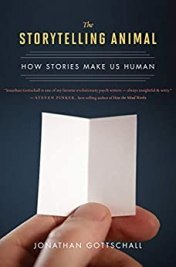
The Storytelling Animal by Jonathan Gottschall
The good news is that because fiction is an inherently emotional experience, it is well-suited to helping us access and process the very emotions we’re seeking to convey in our stories. As someone who has had to do her own share of emotional un-repressing, I recognize that my lifelong love of stories has certainly been influenced by their cathartic power to help me feel things in a safe container. For both readers and writers, stories offer the scientifically proven opportunity to expand the nervous system’s capacity to feel and process emotion—and, by extension, to experience life more expansively.
6 Tips, Tools, and Methodologies to Help You Write Deeply Emotional FictionWriting emotional fiction is both an art and a science, requiring a delicate balance of authenticity and technique. In the following exploration, we will uncover six tips, tools, and methodologies to guide you in crafting fiction that transcends mere words to touch the very soul of your audience.
1. Cultivate Your Own Emotional IntelligenceIt all starts here. You can’t write what you can’t feel. I titled my LOTR post “There and Back Again” for a reason. This first tip is the “going there” part. For starters, we can, of course, use the act of writing our fiction to discover our feelings. But we can also go much deeper, and the deeper we go, the better our fiction has the opportunity to become.
I did not start out as an emotionally intelligent person. Just the opposite. It was a point of pride up through my 20s that I never cried. Then life happened, thirty years of repressed emotions exploded out of my shadow, and I turned into Aunt Bea crying at the drop of a hat (Opie: “It’s the roast. She looked right at it and cried.”). I had to take a crash course in emotional intelligence—one I highly recommend to anyone creating art.
For me, one of the biggest revelations was that emotions are something that happen in the body. I’d always sort of imagined them as ephemerae floating around my head somewhere, rather than as physical sensations (which shows you how disconnected I was). Indeed, one of the reasons we often don’t want to feel our feelings is because they literally hurt in the body. When we talk about being willing to feel our feelings, we’re talking about feeling tension trapped in the body which can only be released when we are willing to feel it.
One of the easiest ways to do this is “body scanning.” When you sit down to write an emotional scene, take a moment to close your eyes and scan your body from head to toe, noticing and naming any sensations you feel. You aren’t necessarily looking for emotions; rather, you’re trying to raise consciousness around physical sensations. If you’re cut off from emotions, it’s because you’re cut off from your body. The act of vocally naming sensations helps promote a mind-body neural connection that makes it easier and easier to raise real-time emotional awareness. This process might sound something like this, “I feel cold in my toes, tingling in my knees, lots of energy in my belly, tension in my spine, lightness in my chest, pressure in the crown of my head.” Don’t worry if you don’t have exactly the right words, since the whole point of the process is to familiarize yourself with sensations that may feel very unfamiliar.
From there, you can move on to other exercises, such as the one I often talk about as embodying emotions. Imagine yourself feeling a certain emotion. Or imagine the emotion you know your character needs to feel in today’s scene. How and where in your body does this show up for you? Think of it as research. When you “tell” readers your character is angry, how might you “show” them instead by describing how this emotion shows up for you as physical sensations?
Another useful exercise is that of emotional pendulating. This is particularly useful when you encounter a difficult or traumatic emotion that is too painful to stay with for very long. You can grow your capacity to handle the difficult emotion in a safe way by feeling into it as deeply as is comfortable, then pendulating out of that state into one that feels pleasurable or safe. For example, if you need to tap your character’s grief but it feels too overwhelming, stay in it for as long as you can, then pendulate into joy or gratitude or excitement. If you’re working through your own difficult emotions, this should be done with care and, if necessary, in the presence of people who can support you. As you get comfortable with the practice, it becomes an incredible tool for accessing your characters’ emotions whenever you need to.
2. Move Beyond a Mental Approach to Writing EmotionsSome people’s challenge with emotions is that they’ve habituated themselves into stuffing them away, so they feel nothing—in which case it can be difficult to tap those emotions on command when you need to write about them. Other people’s challenge may be that they can’t shut the emotions off—they feel everything and feel it too strongly to bear—in which case it can be difficult to control how those emotions show up in their writing.
The key is to make sure that, as a creative, your approach to emotions accesses the full trifecta of your intelligence centers: mind, heart, and body.
For those of us who are heavily mind-identified, the challenge can be that we tend to write mechanically about emotions. We mentally understand what it is to feel love or grief or joy or anger, but we aren’t actually feeling. We’re just thinking about what it feels like. There is a visceral difference, and readers will notice.
Equally, however, those who are comfortable with feeling all the feels in their heart centers may find it difficult to shift out of the drama of all that emotion into a rational space that allows them to carefully craft the emotional experience that should be showing up on the page.
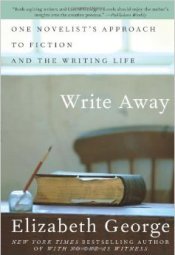
Write Away by Elizabeth George
To write deeply emotional fiction, we have to be able to access the wisdom of both mind and heart—and the best medium between the two is the body. Even back at my most emotionally unintelligent, I always knew I could identify my best story ideas by how viscerally my body responded to them. In Write Away, mystery author Elizabeth George speaks to her own experience with this:
3. Examine Your Story Idea for Pertinent EmotionsWriting is not only an intellectual endeavor for me, it’s also very much a physical one. When I’m onto the right story, the right location, the right situation, the right theme, my body tells me. I feel a surge of excitement in my solar plexus that literally sends the message Yes yes yes! to my brain.
Emotions should never be copy/pasted into a story. The most resonant stories are those that create their own emotions. Most of the time, we will begin a story with an idea about character or plot or theme, and pertinent emotions can arise from there. Occasionally, we may start with an emotion (e.g., “I want to write a story about grief” or “I want to write a story about falling in love”). In those cases, it is imperative we shift into the mental space long enough to carefully choose and craft plots and characters who would naturally generate these emotions.
In order for readers to feel what your characters are feeling, the emotions must arise naturally. Simply telling readers that a character is “sad” or “madly in love” will never achieve the desired effect. For emotions to be powerful, they can never be on the nose. This is why I have often used the personal mantra “n.” This isn’t meant to be taken literally; sometimes you have to call out what a character is feeling. But naming an emotion should be a last resort. Instead, your character’s emotions should be deeply and achingly obvious from the context of their actions and the subtext of their reactions.
More than that, it is important to remember that, in real life, emotions are almost inevitably quite complicated. The more (realistically) complex a character’s emotions, the more layers are available for readers to work through. Some of the most complex emotional opportunities in fiction arise from complicated consequences generated by the characters’ own choices.
4. Mine Your Own Subjective Emotional ExperiencesAt the top of the post, I quoted a question about whether or not a writer’s subjective emotional experiences can translate into a shared universal experience with readers. The answer, simply, is yes. This is because emotions are not subjective. They are objective in their universal applicability to everyone. We all have the capacity to experience the full range of human emotions—the good, the bad, and the ugly. Subjectivity only emerges in the story’s specifics of what prompts these emotions for the characters.
In my post about Lord of the Rings, I spoke about how deeply it touched me and helped me work through feelings of despair. Despair (like hope) is an objective, universal emotion. You and I can feel it just as much as Frodo and Sam. The subjectivity of Tolkien’s story—in which despair is evoked by the Ring’s apocalyptic powers and the characters’ struggles against orcs, trolls, and sorcerers—isn’t something I experience in my life or can relate to. But that doesn’t stop me, and millions of others, from being able to apply the underlying emotion to events that are specific to us.
This is the magic of fiction. We are transported into worlds that look nothing like ours and entertained by characters who do things we would never do, and yet we are still able to feel everything they are feeling. That is catharsis.
As you seek how you may evoke universal emotions in your readers, ruthlessly mine your own subjective experiences. For instance, perhaps you have lost a parent, and you can evoke that same grief in writing about a character losing a comrade in battle. Not everyone reading your story will have gone through these same personal losses, but that doesn’t mean your experiences as translated through your characters can’t help readers tap their own truth.
5. Imagine Your Physical Reactions in Your Character’s ShoesWhen you’re ready to evoke your characters’ emotions on the page, start by imagining what physical reactions you would experience were you in your character’s shoes. Perhaps your character is going into battle for the first time or about to get engaged or attending the funeral of someone they didn’t like. Whatever the case, and no matter how different it is from your own lived experiences, use that writer’s imagination of yours to put yourself in this situation.
For just this moment, you’re not asking how your character would feel or what your character would do. You’re asking yourself what you would feel in this situation. What physical sensations arise for you? Emotions in you inspire emotions in your characters inspire emotions in your readers.
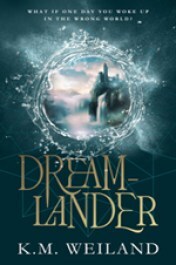
Dreamlander (Amazon affiliate link)
I have a visceral memory of the first time I consciously did this when writing my protagonist’s first battle scene in my portal fantasy Dreamlander. I had written a first draft of the scene that had fallen flat. In trying to write a more authentic scene the second time around, I asked myself what I would feel in his shoes and came up with what is still one of my favorite and most-commented-upon scenes in all my books. Try it!
6. Plan Plot and Characters to Create Deep EmotionsNow that you have some ideas for how to access the emotions you want to portray in your fiction, you have to bring those emotions to life on the page with well-executed techniques.

Creating Character Arcs (Amazon affiliate link)
The most important technique is simply this: sync the plot to the character arc.
At the core of your character’s arc are all the emotions you could possibly need for your story. But the only way to tap the richness of your character’s inner conflict is to craft an external plot that harmonizes with that inner arc. I’ve talked about this elsewhere (in all my books and specifically in Writing Your Story’s Theme), but the nutshell is that plot, theme, and character are not separate pieces. In a cohesive and resonant story, one naturally generates the other.
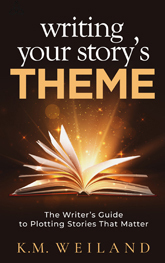
Writing Your Story’s Theme (Amazon affiliate link)
They also generate authentic emotion. When the events in the plot prompt the character’s arc, and the character’s inner struggles then influence decisions in the plot, the only emotions that will show up on your page are those that are inherent to the story and just begging to be dramatized through the plot’s actions.
As you dig deeper into the interpersonal emotion that shows up between your protagonist and the supporting characters, look for ways you can raise the emotional stakes. Don’t allow characters to feel just one emotion for each other. Make things complicated and messy, just like they are in life. Love and hate, joy and disappointment, excitement and fear—all of these emotions exist together. As you craft your characters’ relationships, look for ways to create tension between their need for connection and the resulting conflict. As your characters pendulate between the two, your opportunities to write deeply emotional fiction will grow with every page.
***
Learning how to write emotional fiction is, at its core, a journey into the heart of our shared humanity. It is not just an artistic endeavor; it’s an exploration of the human experience. The power to move readers lies not just in the narrative but in the authenticity of its emotion. This foray into the tools of cultivating and sharing emotional intelligence on the page is an invitation to delve into all the richness that is available in the human psyche. As writers, we navigate the sea of emotions, charting a course that offers the potential to leave a lasting emotional imprint on readers’ hearts—a legacy of words that linger, evoke, and, above all, make us feel more profoundly. May your narratives become beacons, guiding readers through the storms of their emotions and leaving them changed by the transformative power of deeply emotional fiction.
Wordplayers, tell me your opinions! What has been your most powerful experience in learning how to write deeply emotional fiction? Tell me in the comments!Click the “Play” button to Listen to Audio Version (or subscribe to the Helping Writers Become Authors podcast in Apple Podcast, Amazon Music, or Spotify).
___
Love Helping Writers Become Authors? You can now become a patron. (Huge thanks to those of you who are already part of my Patreon family!)The post 6 Tips to Write Deeply Emotional Fiction appeared first on Helping Writers Become Authors.
February 26, 2024
How to Use Antagonists in Your Story: The Right Way and the Wrong Way
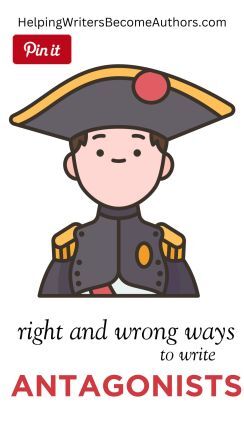 How to use antagonists in your story is a critical skill that can either elevate or undermine your entire story. In many ways, antagonists are the true architects of unforgettable plots, and as you navigate the path between narrative brilliance and potential pitfalls, the art of utilizing your story’s antagonists becomes crucial to success.
How to use antagonists in your story is a critical skill that can either elevate or undermine your entire story. In many ways, antagonists are the true architects of unforgettable plots, and as you navigate the path between narrative brilliance and potential pitfalls, the art of utilizing your story’s antagonists becomes crucial to success.
When we think of antagonists and how they should be written, what often comes to mind are specific characteristics. We envision villains, or perhaps just complicated anti-heroes, who offer enough charisma and enigma to spark reader curiosity and, hopefully, create scintillating scenes with the protagonist. However, if we zoom back to look at storyform, we see the antagonist’s true function within story is that of creating plot.
As the person or thing standing between the protagonist and the story goal, the antagonist is what creates the conflict. This conflict is what creates the narrative throughline (aka plot), and that throughline is then what creates the opportunity for a cohesive thematic argument.
In short, the antagonist is so much more than just the “bad guy.” The antagonist (or “antagonistic force,” if not personified) is one of the most integral pieces to creating a story that works. Your protagonist may be the main attraction, but the antagonist is the one who provides the stage on which your protagonist gets to shine. Without a well-realized antagonist, the entire plot begins to sag. Understanding how the antagonist operates at the level of plot makes all the difference in helping you frame a solid plot and character arc for your protagonist.
How to Use Antagonists: Napoleon vs. Saving Private RyanLast fall, I had the opportunity to view two movies in the theater in the same week—Napoleon, Ridley Scott’s recent bi-epic (see what I did there?), and a 25th-anniversary (!!!) showing of Steven Spielberg’s WWII classic Saving Private Ryan. Other than the fact that both films focus on subjects of war, they don’t obviously have much in common. However, the contrast between how they manage their antagonistic forces—and thus their plots—provided striking examples of how to use antagonists the right way versus the wrong way.
Mostly, this post is inspired by Napoleon and why, in my opinion, it fell flat. To start, I will say that Ridley Scott has directed some of my all-time favorite films (Gladiator and Black Hawk Down), and when he’s hot, he’s hot. But when he’s not, well, he’s not. My experience of Napoleon was well iterated by “BurekAuFromage,” as featured on the movie-review site Letterboxd:
If the only things you knew going in were that Napoleon was good at military stuff, became the main guy in France, lost in Russia, came back and lost again, you will come away from this movie being sure of less than when you came in. No discernible cause and effect to anything, not the faintest political or contextual framework for a single action that he takes.…
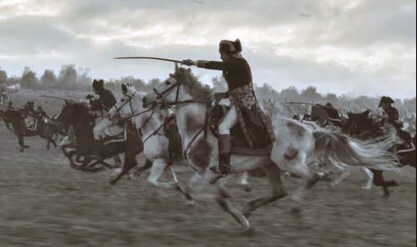
Napoleon (2023), Columbia Pictures.
The film was a beautiful explosion of blood and thunder, sound and fury. But for me, this couldn’t overcome the fact that, aside from being a disappointing historical experience, it was also just a boring story. It fell into one of the main pitfalls of historical fiction, which is offering a rote recitation of the facts (or approximations thereof) without thoughtfully stringing them together into a narrative that offers thematic grist.
Contrast that with even a cursory examination of Saving Private Ryan and its intentional commentary on the thematic patterns available from within its own historical context. Now, I won’t say Saving Private Ryan, for all its merits, is the best movie ever. (I can never watch it without comparing it to Band of Brothers, which is, in my opinion, superior in all ways.) But even apart from its own significance as a groundbreaking cinematic experience, it is undeniably a story that works.

Saving Private Ryan (1998), DreamWorks Pictures.
There are many contrasting examples and lessons that could be drawn between Saving Private Ryan and Napoleon, but perhaps the most significant reason the former works and the latter does not is their differing treatments of their antagonistic forces.
As epic war stories, both films largely feature abstract and systemic antagonistic forces. Saving Private Ryan offers up the Nazi Army as the primary antagonist, represented mostly by faceless troops and most significantly in the personification of “Steamboat Willie”—the German gunner who is captured, released, and then returns to kill again.

Saving Private Ryan (1998), DreamWorks Pictures.
In Napoleon, the protagonist confronts a series of oppositions, most of which boil down to either resistance from his own French government or the armies of opposing nations, such as Austria, Russia, and, climactically, England. Although various historical politicians and heads of state provide faces and names to represent these greater threats, they never emerge as dimensional characters in their own right, rendering them just as vague and general as the armies they front. The one exception is the Duke of Wellington, who famously hands the brilliant Napoleon a crushing defeat at the Battle of Waterloo.
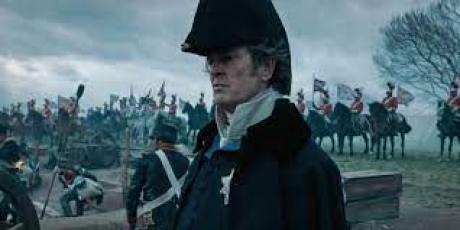
Napoleon (2023), Columbia Pictures.
Significantly, this section pulls out of Napoleon’s POV to focus primarily on Wellington. It is Wellington’s goals, actions, and reactions that drive this section. In essence, Wellington becomes the protagonist in this section, with Napoleon functioning as the antagonist. Apart from the arguable British bias of this choice, it is interesting to note that (for my money, anyway) this Third Act sequence is the single most interesting section of the entire film.
Why is this? As I walked out of the theater afterward, what struck me was that Wellington’s segment was really the only one in the entire movie that offered a solid back-and-forth between equally characterized protagonist and antagonist. Unlike the rest of the film, the Battle of Waterloo offered a narrative throughline and the necessary characterization to create enough comparison and contrast for patterns of thematic exploration to emerge.
Contrast this with Saving Private Ryan. Although the film only rarely characterizes its antagonists, it does accomplish two vital tasks:
1. It utilizes a consistent antagonistic force to create a seamless narrative throughline from beginning to end.
2. It carefully dramatizes its mostly unseen antagonistic force (via the subtext of the antagonist’s effects upon the landscape and the characters in it) to oppose the protagonist and the other main characters in ways that require thematic consideration.
In Napoleon, opposing armies are mowed down one after the other without any consideration or discussion. As presented, Napoleon himself is not much affected by the opposition he faces. He merely swats away one enemy before moving on to the next one. One obstacle does not necessarily catalyze the confrontation with the next, which inevitably creates an episodic and scattered feel within the narrative. More than that, because the antagonist is never treated as much more than scenery, there is no opportunity to examine the landscape created by this context and what deeper meanings may emerge for both sides in pursuing the conflict.

Napoleon (2023), Columbia Pictures.
The difference here is striking. (I feel pretty safe in promising that Napoleon is not gonna get a 25th-anniversary showing at your local theater.) One of these films is a story; the other is just a string of scenes. This is not because one had better source material than the other (although Saving Private Ryan certainly benefitted from a much higher concept). It certainly isn’t because one had inherently more fascinating characters than the other (indeed, Saving Private Ryan‘s characters are arguably on-the-nose in comparison to the complexities available in so influential a personality as Napoleon Bonaparte). Rather, it all comes down to how the plot was affected by the antagonist—or lack thereof.
How to Use Antagonists the Right Way: 4 NecessitiesHow can you learn from these two films to make sure your story gets the kind of plot treatment that not only rivets audiences, but also creates the foundation for amazing character arcs and themes? Following are the four most important things to understand about how to use antagonists to create a functional storyform.
1. Goals Create AntagonistsWe can argue which comes first in creating story: the protagonist or the antagonist. By their very integrality to plot, we can certainly take the approach that the context created by the antagonistic force is what allows the protagonist to emerge as such. However, it is equally true that the protagonist’s goal is what creates the antagonist.
First, let us define “goal” as the overarching story goal or desire that will lead the protagonist through the entire story. This goal is the scarlet thread that holds the narrative together. Without that goal, there is no antagonist. This is because, by its very nature, the story goal creates opposition between the protagonist and someone or something else. If the goal aligns the protagonist with someone/thing, then there can be no conflict. Therefore, to ensure your story features an antagonist strong enough to create the plot, you must first ensure your protagonist wants something badly enough to pursue it against all opposition to the very end of the story.
The Wrong Way: In Napoleon, although we understand Napoleon wants to conquer everybody’s armies and rule the world, this is generally presented as an incidental goal. It is not really his purpose to make war on everyone; but what’s he do when armies keep popping up all over the place and tempting him? Likewise, it isn’t really his goal to rule France. He wants the crown, but as shown in the movie, he more or less just stumbles into grasping it. As a result, a solid antagonistic opposition never emerges. There is plenty of conflict, but none of it is focused.
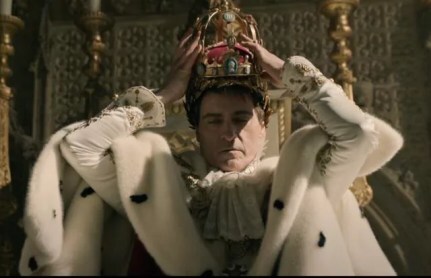
Napoleon (2023), Columbia Pictures.
The Right Way: In Saving Private Ryan, the characters’ goals are explicit throughout. Their mission is to trek through occupied France, looking for “a needle in a needlestack,” and return Private Ryan to his grieving mother, regardless of the cost to themselves. Like Napoleon, they face episodic opposition at every turn, but unlike Napoleon every one of their encounters is defined by their goal.
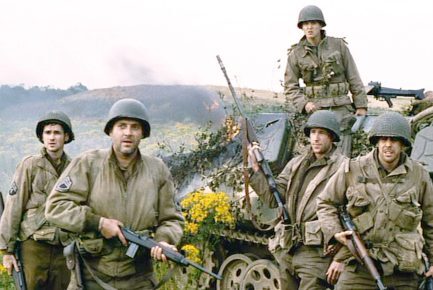
Saving Private Ryan (1998), DreamWorks Pictures.
2. Antagonists Create ConflictWhen we get under the hood of story to look at how the different parts function, we can see that the whole point of the antagonist is to create obstacles to the protagonist’s goal. These obstacles are what create the conflict. Although the word “conflict” tends to evoke ideas of altercation, conflict within story is simply opposition. The protagonist has a goal—and that goal is met with opposition. This opposition is what deepens the story by generating complexity. The more obstacles a character encounters, the less straightforward it becomes to reach the goal. Scene after scene emerges, until suddenly you have a whole story!
The antagonistic force’s role is to create these obstacles. A consistent antagonistic force generates a seamless chain of obstacles, ensuring that each conflict the protagonist encounters is not random, but builds into the larger pattern leading to the final confrontation for the ultimate goal.
The Wrong Way: Aside from Wellington at the very end, Napoleon never faces a cohesive antagonistic force. He flails against his own countrymen as he seeks control of the army and then the state, meanwhile pursuing battles with one country’s army after another. Because the story is not framed around a specific protagonistic goal, it is unable to bring a sense of cohesion to its varied antagonistic forces, which dooms its narrative to feel unfocused and episodic.
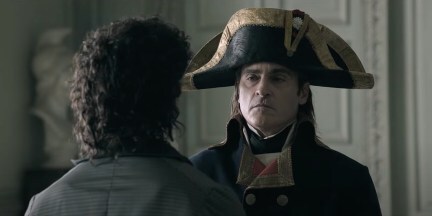
Napoleon (2023), Columbia Pictures.
The Right Way: As Captain John Miller leads his squad deep behind enemy lines in occupied France, they encounter conflict after conflict as they confront the enemy over and over again. Not only are all of these encounters unified by a) a consistent antagonistic force and b) an unwavering overall plot goal, they avoid monotony by using the repetition to explore varying faces of the same antagonistic force, revealing its complexity.
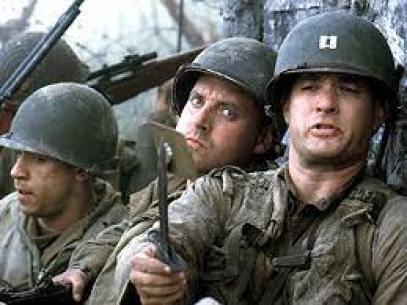
Saving Private Ryan (1998), DreamWorks Pictures.
3. Conflict Creates ThroughlinesWhile conflict is easy enough to create on the scene level, truly functional plot conflict arises from a well-chosen and consistently executed antagonistic force in opposition to the protagonist’s goals. With this foundation in place, the conflict that emerges in every scene becomes meaningful to the larger whole. When this happens, a solid narrative throughline begins to emerge.
The throughline is that scarlet thread we talked about. It is the unifying principle in every scene which creates the pleasing patterns of the larger whole. From those patterns, audiences derive meaning from the story. It ceases to be nothing more than a series of scenes strung together and becomes a story—a resonant and thought-provoking commentary on its own events.
The Wrong Way: If we had to sum up a throughline for Napoleon, it would simply be “Napoleon tries to conquer Europe.” Although that’s not an inherently bad throughline, it suffers from general vagueness. There is no meaning inherent in this emerging pattern. It is simply an observation of something that happened. More than that, as executed in the film, the episodic randomness that is created by its lack of antagonistic foundation fails to enforce this throughline. It lacks the urgency of a solid protagonistic goal met by solid antagonistic opposition, and thus fails to provide the story with the necessary momentum.
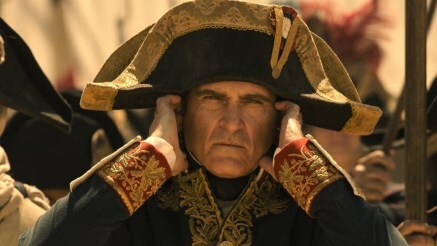
Napoleon (2023), Columbia Pictures.
The Right Way: Every scene in Saving Private Ryan is focused on one thing and one thing only, and that is the primary conflict between the titular goal and the steadily increasing opposition that continuously raises the stakes. Because the story narrows its focus to one goal and one antagonist, what emerges is the ability to go deeper and deeper into the tension between the two. As opposition increases in a story, the inevitable question a protagonist must ask is, “Is it worth it?” The answers to that question inform the story’s throughline.
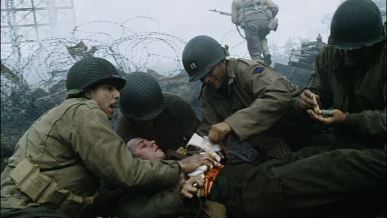
Saving Private Ryan (1998), DreamWorks Pictures.
4. Throughlines Create Themes
Writing Your Story’s Theme (Amazon affiliate link)
The consistency of a solid throughline creates the context of pattern within a story. From within this pattern—with all its opportunities for comparison and contrast—arise the opportunities for deep and meaningful themes. The very idea of “theme” is something that shows up so often within a particular context that it defines it (e.g., if there are unicorns all over the place at a kid’s birthday party, then the theme must be unicorns). This kind of repetitive variation is only possible in a story that maintains a strict focus on its primary goal and conflict.
Within a story, theme emerges from plot and character. The antagonist frames the external conflict and forces the protagonist into the inner conflict that raises the chewy thematic questions. If the antagonist is not well chosen to oppose the protagonist’s goal or is not consistently presented as the primary opposition throughout the story, the entire thematic potential of the story will be undermined. When set up with consistency, however, the antagonist can ensure that the story not only works at the level of plot but also the deeper level of theme.
The Wrong Way: Although the complexity inherent in the history dangles all sorts of opportunities for Napoleon to explore interesting themes, the film itself never gets around to exploring much of anything. It comments upon this and that aspect of Napoleon’s life and motivations, but never circles back to raise the stakes by going deeper. Most of this is due simply to its general lack of focus in the external plot, in which a consistent antagonistic force is never developed.
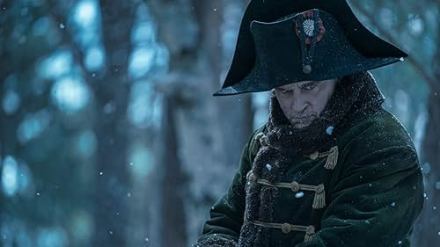
Napoleon (2023), Columbia Pictures.
The Right Way: Twenty-five years later, Saving Private Ryan continues to deeply affect audiences. Some of this is due to its shocking spectacle and to its historical importance (both in the subject it treats and in its own right as a groundbreaking film). But, mostly, it’s because its careful plotting takes its central conflict beyond just its surface action to a deep thematic exploration. This is only possible thanks to its use of a unifying antagonistic force.
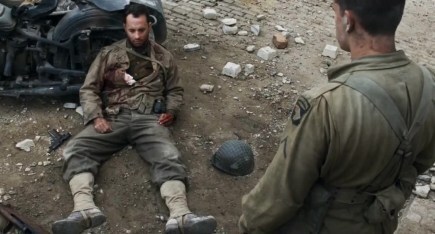
Saving Private Ryan (1998), DreamWorks Pictures.
***
Comparing Napoleon and Saving Private Ryan allows us to distinguish the right and wrong ways to use antagonists. While the former film succumbs to episodic randomness and a lack of thematic exploration, the latter meticulously crafts a narrative throughline, leveraging a consistent antagonist to elevate the story into a resonant commentary on the human condition.
Antagonists are not mere shadows cast by the protagonists but rather dynamic architects shaping the very essence of a compelling plot. They are the linchpins that either fortify or undermine the entire narrative structure. Once you understand how the antagonist is the key to unlocking not just conflict but also thematic richness, you can utilize antagonists as the cornerstone in creating stories that endure and captivate.
Wordplayers, tell me your opinions! What do you think is the most important thing to understand about how to use antagonists in a story? Tell me in the comments!Click the “Play” button to Listen to Audio Version (or subscribe to the Helping Writers Become Authors podcast in Apple Podcast or Amazon Music).
___
Love Helping Writers Become Authors? You can now become a patron. (Huge thanks to those of you who are already part of my Patreon family!)The post How to Use Antagonists in Your Story: The Right Way and the Wrong Way appeared first on Helping Writers Become Authors.
February 19, 2024
A Writer’s Comprehensive Guide to Backstory
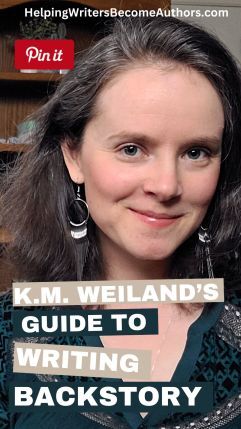 Hello, welcome to Everything You Need to Know About Backstory! I’m K.M. Weiland, and you are listening to the Helping Writers Become Authors podcast or watching it because this is also a video post.
Hello, welcome to Everything You Need to Know About Backstory! I’m K.M. Weiland, and you are listening to the Helping Writers Become Authors podcast or watching it because this is also a video post.
This video is in answer to a question from SW, who asked:
“I’m interested in how you figure out how to chunk backstory and sprinkle it through the story.”
This is always a pertinent question, because wherever you have a story, obviously, you have backstory. Backstory, simply put, is whatever comes before the main story. Generally speaking, backstory is the history of the characters or maybe the story world. It could be whatever has happened in the protagonist’s life up to that point, or it could be multigenerational, going into very in-depth world-building and such in different types of stories, whether it’s fantasy or historical or something like that. In any type of story, backstory and how you treat will always be a consideration because it is a big deal. It’s very important and can, in a lot of ways, make or break how well the main part of your story comes across.
What Is Backstory?So functionally, what is backstory and what is the point of it within a story?
Functionally, backstory exists primarily to create context for the main story by indicating something happened before the main events of the story. From it, we immediately get this sense of verisimilitude. It’s like the iceberg with 7/8th under the water, where there’s more than meets the eye. Even in stories where the backstory itself isn’t conveyed or isn’t shared with readers explicitly or otherwise, it still gives us this sense of a world that’s bigger than just whatever is being conveyed on the page. That can go a long way toward creating a sense of depth and nuance and intricacy within your story, which can be really important for pulling readers in.
In a lot of stories, the backstory will be very important to the main story and will need to be brought out and shared in some way that’s more than just incidental. This is usually the case in stories in which we want to get clear on what is motivating the characters in the main part of the story.
Backstory Creates Character MotivationSo, aside from just bringing in color and dimension, the primary purpose of backstory and why it’s important is that it allows us to create a sense of depth and cause and effect to a character’s motivation within the main part of the plot. Sometimes the reason for a character’s goal in the main part of the plot will be directly connected to a major backstory event. It couldn’t happen unless this backstory event happened first and then was brought in and explained in the story.
In other stories, the primary thing that kicks off the character’s goal and make them willing to pursue it throughout the main plot will be something that happens in the main story. But even in these instances, backstory can be important because it gives us a sense of who this person is and why they might react to the events in this story in such a way.
Why, for instance, is the detective so obsessed with catching this particular bad guy? We’ve seen this in many mysteries and thrillers where it’s not just because it’s his job; it’s because there’s something in his own backstory that mirrors this or is triggered by it. There’s a personal reason that makes the events of the plot personal, even if they really aren’t that personal (as they often aren’t, at least on the surface in detective stories because it’s just his job—he’s just doing his job). When we bring in the backstory, it allows us to explore the depth and the nuance of that motivation.
The Ghost in Your Character’s Backstory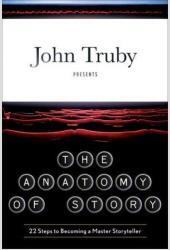
The Anatomy of Story by John Truby (affiliate link)
One of the most useful terms for exploring the true depth and importance of backstory is the Ghost. This is a term that was originated by John Truby in his book The Anatomy of Story. You may often hear it used—or another word used similarly, and that is the Wound.
The Ghost is something that has happened in the character’s past that is deeply influential to the choices that are made in the main part of the story. The idea of the Ghost is that it’s something that haunts the character. It’s something that needs to be laid to rest, whether it’s directly influencing the events of the plot or, like in our detective example, it’s just something that is there for him or her. It’s something that is influencing and giving reason and purpose to why they’re willing to go to the extremes they’re going to go to in the main plot.

Creating Character Arcs (Amazon affiliate link)
The Ghost is important particularly when you are dealing with character arcs. In a character arc, the character begins with a limiting Lie They Believe, a perspective about the world that is limiting or dysfunctional in some way. In a Positive Change Arc, the character would arc out of that into a more functional Truth.
The Ghost is what creates the circumstances of that Lie. The character has to have a reason why they are so invested in such an ultimately destructive point of view. What made them think this way? The answer could be something very simple. Perhaps this was just how they were brought up, and they have had no reason to question their belief structure because it was reasonably functional up to this point. In that case, even though the Ghost is not horrific or traumatic, it’s still there in the backstory and explains why the character is the way they are in the beginning of the main story.
However, a lot of times, as the names suggest, the Ghost or Wound will be something a lot deeper with a lot more heft to it. It could be a very traumatic event that caused them, for example, to believe all people are bad or something like that, or that they’re not good enough, or that they don’t have the strength to do whatever is necessary to chase their dreams, or whatever is the Lie/Truth your character is trying to work with in your story that’s creating that inner conflict.
Primarily when you think of backstory and why it’s important, this is it: what is the Ghost in your character’s backstory? All the other backstory stuff—the stuff that doesn’t actually affect the main part of the plot—doesn’t matter. For example, generally speaking, it’s not going to matter where your character was born or what their birthday is or where they went to school. Even though all of that is a part of who they are and it’s their backstory, it’s not important to the main plot and therefore isn’t technically functional backstory within storyform as we think of it. So when you’re thinking about backstory and what to include, the first thing to think about is what’s your character’s Ghost? What is the catalyst in your character’s backstory that is kicking off the need for their character arc and the events of the external plot?
How Much Backstory Do You Need?This is an important question. I think a lot of writers fall in love with their backstory. I can speak to this myself. I love writing backstory for my characters. I love that part of my outlining process where I get to dig deep into the character interviews and what I call the character sketches to find out everything about these people and about the world they live in. It’s so much fun, and there’s no pressure because there’s no need to create a plot out of it necessarily. You can explore all those things, like where they were born and what’s their birthday and who was their best friend in middle school and that kind of thing. And to you as the author, it’s fun, right? But most of that stuff is not going to be important to the story.
It’s very important for authors to get a sense of which pieces of the backstory are necessary to provide general verisimilitude and context that give the impression of this character as a dimensional real human being and what pieces are going to drive the plot. Pretty much anything else does not need to be in the story.
It’s very important to avoid self-indulgence when it comes to backstory. When it comes to backstory, the only things you’re going to include are those that actually matter to the plot, those that actually drive the plot. It’s just the same as when you’re thinking about why to include any part of a story or any extra character or any particular scene. The question is always: Does this affect the bottom line? If I pull this, will the story be impacted? Will the reader’s ability to understand the Climax be negatively affected? And if it’s not, then it probably doesn’t belong in the story. That’s just a good rule of thumb to keep in mind when it comes to backstory. Generally speaking, less is more.
3 Methods to Convey BackstoryThere are several different techniques you can use to convey backstory. Last year, I did a three-part series about backstory techniques.
1. Sharing Backstory With the Backstory DripThe main one is the one you’re going to want to use in pretty much any story, even if you do choose to use some of the other techniques. It is the most effective, the most invisible, and therefore the most useful of all backstory techniques. And that is the backstory drip.
Basically, you’re taking little bits and pieces of your backstory and slowly dripping it into the main narrative as the information becomes necessary or important for readers to be able to understand what’s going on. This technique is valuable because it doesn’t interrupt the main story. It allows you to create this seamless narrative of the main part of the story without boring readers with information dumps or with backstory that isn’t pertinent.
It’s very seamless, and usually how it’s introduced into the prose is via a sentence here or a paragraph there. It’s possible to do it in dialogue between characters, but it’s important that it’s not an “as you know, Bob” conversation in which two characters are sharing information they both already know. It needs to be a conversation that’s important to the plot and to the relationship between the characters and how that’s developing. It must actually move and change the plot as you go.
You can think of backstory as clues. It’s something you’re putting into the story because the readers need to know about it, but probably the characters do as well. It’s part of the discovery, and every little piece of the backstory that’s either discovered or that the character is able to see in a new light becomes a clue that changes the trajectory of their character arc and whatever they’re doing in the plot. We can see this in stories where the backstory is actually very important to the main story. It’s not just there in the background, but learning about it or recontextualizing it is really important to how the character moves through the main plot toward the plot goal.
Investigation stories are the most obvious example of this. For example, the movie State of Play with Russell Crowe and Ben Affleck is a good example. You have the main plot where there’s this murder investigation the journalist is doing and the politicians that are kind of involved in it in Washington DC. But the backstory is super important, and the backstory is just the relationship between Russell Crowe’s character and Ben Affleck’s character and Ben Affleck’s wife, who is played by Robin Wright. And this backstory becomes really important. It’s not that the characters don’t know about it, but as they slowly share it with us and as they slowly revisit it themselves and recontextualize it, it changes their understanding and their perception of themselves, of their relationships, and ultimately their ability to understand what’s going on in the investigation part of the main plot.

State of Play (2009), Universal Pictures.
In a story like this, you can see how important the backstory is, how crucial and integral it is, and also how important it is to sew it in bit by bit. If you just dumped it at the beginning or in a big scene, then you lose the ability to not just tease readers, but also to allow readers to experience that backstory along with the characters. It becomes a shared experience between the characters and the readers.
This is why the backstory drip is the single best way to convey backstory. You will use it in almost any story even if you use some of the other techniques. These other techniques I’m going to mention are equally valid and can be extremely helpful and useful. But they are a little bit gimmicky. So you have to be careful because they’re more in the reader’s face. Readers have to be really interested in the backstory to get these techniques to work because it requires more of an investment from them.
2. Sharing Backstory in a PrologueThe first of these techniques is the prologues. A prologue is basically an extra chapter at the beginning of the story that features extraneous information. Prologues, in general, are very tricky. Essentially, the prologue is your Hook. This is what has to pull readers into the story even though it’s not actually the first part of the structural narrative. It’s set apart, and if you don’t do a good enough job of hooking readers in, it can seem too separate from what follows and not a good hook. It’s not something that pulls them in.
Too often, particularly in years past, writers have been guilty of using this as a place to just info dump the backstory: here’s what happened, here’s the entire life story or the entire world history of the world I’ve built or whatever. That’s not a good hook. If you’re going to use a prologue for your backstory, you want to think of it as a tease. It’s a part of the drip, right?
Still, it needs to really hook readers. It should be so much explaining what’s going on as getting them to want to know more: Oh my gosh, this thing happened in the backstory and the character’s past, and I want to know why and I want to know what happens next because how does someone respond to that?!
From there, you can pull into the main story because they’re invested—they have a reason to want to know based on the backstory you’ve shared in the prologue.
3. Sharing Backstory in FlashbacksLike prologues, flashbacks are also dramatized scenes of the backstory. Unlike prologues, they are interspersed throughout the main part of the narrative, and you might have one or you might have several. They can be as short as a few paragraphs, or they can be as long as a couple of chapters.
The great thing about flashbacks and the reason you might want to use them is because they show instead of tell. It allows readers to be right there, to viscerally experience whatever it is that happened in the character’s backstory without needing to be told about it.
The downside of this is that it chops up your narrative. It breaks up the flow of the main narrative so you can go back in time and share something. Particularly if readers aren’t as interested in the backstory as you want them to be, that’s going to be problematic. They might end up skipping the flashback or skimming it or just giving up on the story because, Oops, this is not what I wanted to be reading about. At the very best, flashbacks can create a disjointed feeling to the narrative. You have to be careful how you use flashbacks and how often you put in flashbacks and how long they are.
In last month’s video, we talked about multiple plot lines, of which alternating timelines can be one variation. This is basically where you’re expanding upon the flashback idea, but you’re telling the entire backstory as a second story in which you’re alternating the chapters throughout the entire book. This obviously would only be appropriate in stories where the backstory is huge, is equally dramatic and interesting as the main story and is extremely pertinent to the main timeline.
In stories like this (and really in any kind of story where you are alternating between POVs, plot lines, or timelines), I used to say, “You have to make sure each one is just as interesting to readers as the other one because otherwise they’re just going to skip and get back to it.” But what does that mean? What does it mean that “you have to make each one as interesting as the other”? Because a lot of times writers will say, “Well, the backstory is really exciting. All this incredibly dramatic stuff happens. There’s battles! It’s so exciting. Readers will love it!”
But that’s not necessarily true because the action in your backstory isn’t what makes it interesting. What makes it interesting to readers is emotional urgency. They need a reason to care about what’s happening to the point that they’re willing to read all the details and to spend a lot of time in these chapters or in these flashback scenes instead of just wanting to get back to the main part of the timeline and continue with that because they are invested in that.
Therefore, the key, if you’re going to do lengthy flashbacks or alternating timelines, is that you want to make sure there’s emotional urgency. Readers have to really want to know what happens in the backstory enough that they are willing to experience it. It must be just as important to them as whatever is happening in the main part of the story.
So when it’s done well, this approach can be fantastic. When it’s not done well, it can slow down your story and cause problems. It’s something to do to use with caution. Study how it’s done in stories that kept your attention and that you really enjoyed, so you can understand the difference between dumping backstory or sharing backstory that isn’t as interesting as the main story versus something that is really integral and interesting and is driving the emotional momentum of your story.
The Single Most Important Rule About BackstoryAnd all of that brings me to what I think is the single most important rule about backstory. This affects what kind of backstory you share in your story and when you share it. Now, it is a rule of thumb; it’s not going to apply universally. But it is a great little dictum to have in your head to ask yourself, “You know, do I want to put the backstory in here? Do I want to share this backstory?”
This number one rule for backstory is simply this: do not share backstory until you’ve reached a point in the story where it’s crucial for readers to know this backstory in order to be able to understand the main story.
This also includes any scenes in which it’s necessary for your characters to know the backstory or to remember the backstory or just to explain their actions via the backstory so the plot can move forward.
Again, this is not a hard and fast rule, but generally speaking, readers don’t care about your backstory until it becomes important to the main story. This is also a great way to help you build subtext within your story. If you’re just hinting at backstory (e.g., “something happened in the backstory, there was a Ghost, but I’m not gonna tell you what it is yet”), but it’s important and it’s driving the character’s reactions, that’s a way to pull readers along so that by the time you do get to where maybe you want to have a big reveal via a fully dramatized flashback, now you have emotional urgency. Now, readers will think, “Okay, I really want to know what happened in the character’s backstory, versus maybe sharing that flashback early on when I don’t care, I don’t have a reason to care yet about why this is so important.”
In sharing backstory too soon, you sap subtext out of the character’s actions and motivations because it’s all been explained—it’s all been laid out there. Now, obviously, you do need to lay it out there sometimes, and that’s the point of the rule. When the backstory becomes necessary, when it becomes pertinent, that’s when you want to share it. You also don’t want to compromise your story by not sharing backstory, and causing readers to think, “Well, this makes no sense. Why would the character act this way? What information am I missing that would have made sense of the explanation of the characters’ relationships with people who they had a past history with?”
To sum up, the importance of backstory is that it provides context. It provides a Ghost for your character’s arc. From that, it allows you to build this dimension and this depth into your main narrative. But it’s important not to overshare or to overvalue backstory. It’s important, but it should only be used carefully and subtly throughout the story to create an effect where readers are never pulled out of the main narrative, where it’s all one seamless whole, and everything that happens is building and adding to the emotional momentum of the story.
Wordplayers, tell me your opinions! What do you think are the trickiest parts of sharing backstory? Tell me in the comments!Click the “Play” button to Listen to Audio Version (or subscribe to the Helping Writers Become Authors podcast in Apple Podcast or Amazon Music).
___
Love Helping Writers Become Authors? You can now become a patron. (Huge thanks to those of you who are already part of my Patreon family!)The post A Writer’s Comprehensive Guide to Backstory appeared first on Helping Writers Become Authors.

